Booms and Busts
1967-1987
Institutional Expansions
More institutional buildings were also constructed during this time.
In 1986, the University of Calgary received Scurfield Hall. Ralph Scurfield was from Winnipeg and arrived in Calgary to head what became one of North America’s largest home building companies. He was active with the University in starting the Faculty of Management, which was housed in a new building, named after its benefactor. In 1985, he died in an avalanche while heli-skiing in the Bugaboo Mountains of B.C.
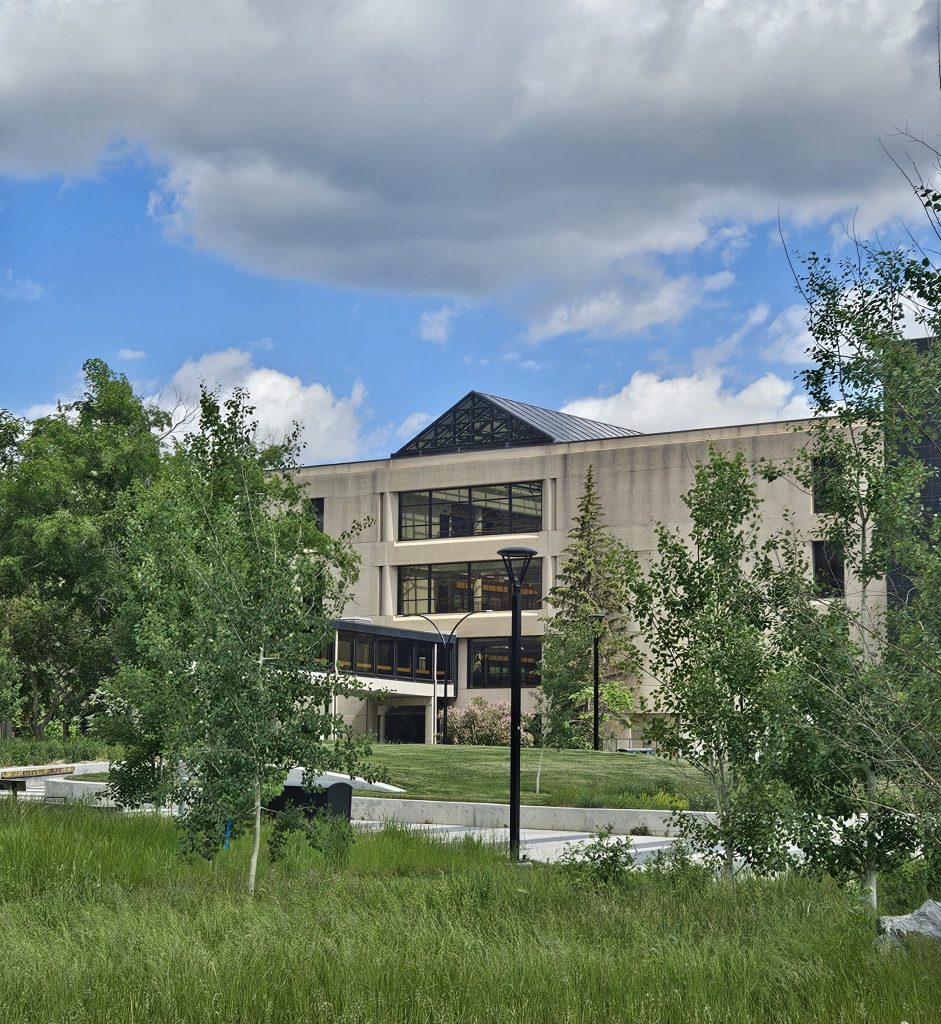
Also at the University, Calgary Hall was renamed Craigie Hall to honour Peter Craigie. Craigie was a graduate of the University of Edinburgh in religion and became VP Academic at the University of Calgary and a renowned Biblical scholar. He died in a car crash in 1985.
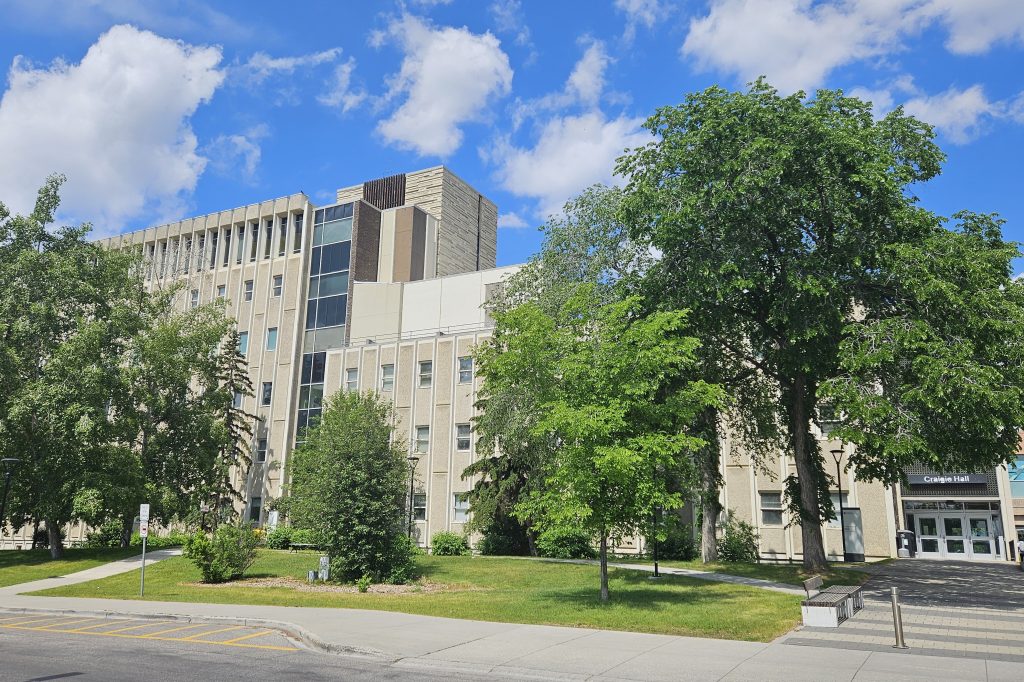
The University also implemented a beautification process on its grounds by 1971. Trees were planted that were donated by Calgarians and flowers are grown in the University greenhouses for planting.
In 1973, George Norris won a competition to design artwork for the ground between the administration building and library. The 18 foot, 4.5 ton sculpture of a book’s pages fluttering is dubbed “The Prairie Chicken” by students (I walked by that thing almost everyday for 6 years and had no idea it’s supposed to be a book!). And in 1986 a former pedestrian bridge that spanned Crowchild Trail was installed as an arch at the University’s entrance (I drove under that plenty of times too).
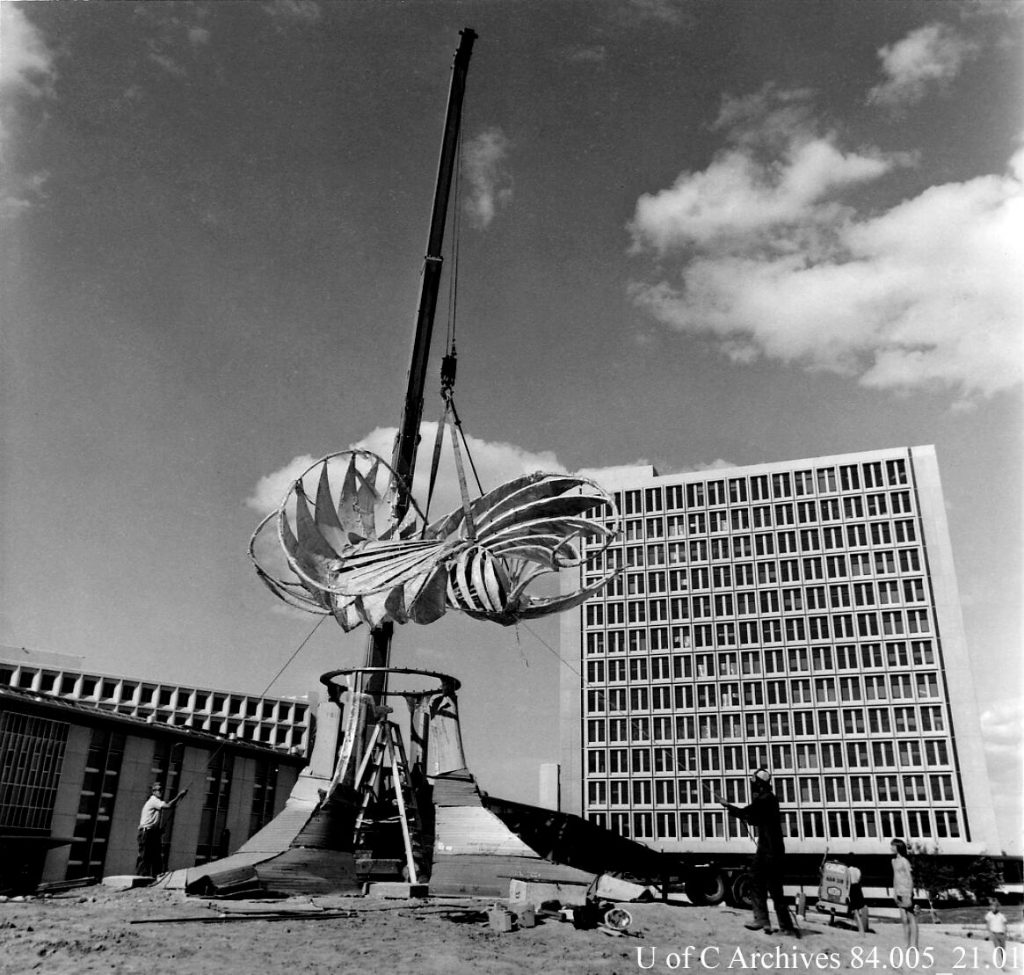
Rothney Astrophysical Observatory opened in 1972 near Priddis, AB on land gifted by the grandchild of Stampede founder A.E. Cross, Alex Rothney “Sandy” Cross. It’s a UofC Science Dept. teaching and research facility, contributing to star search (no, not with Ed McMahon!), identification of binary stars, and finding minor planets and comets.
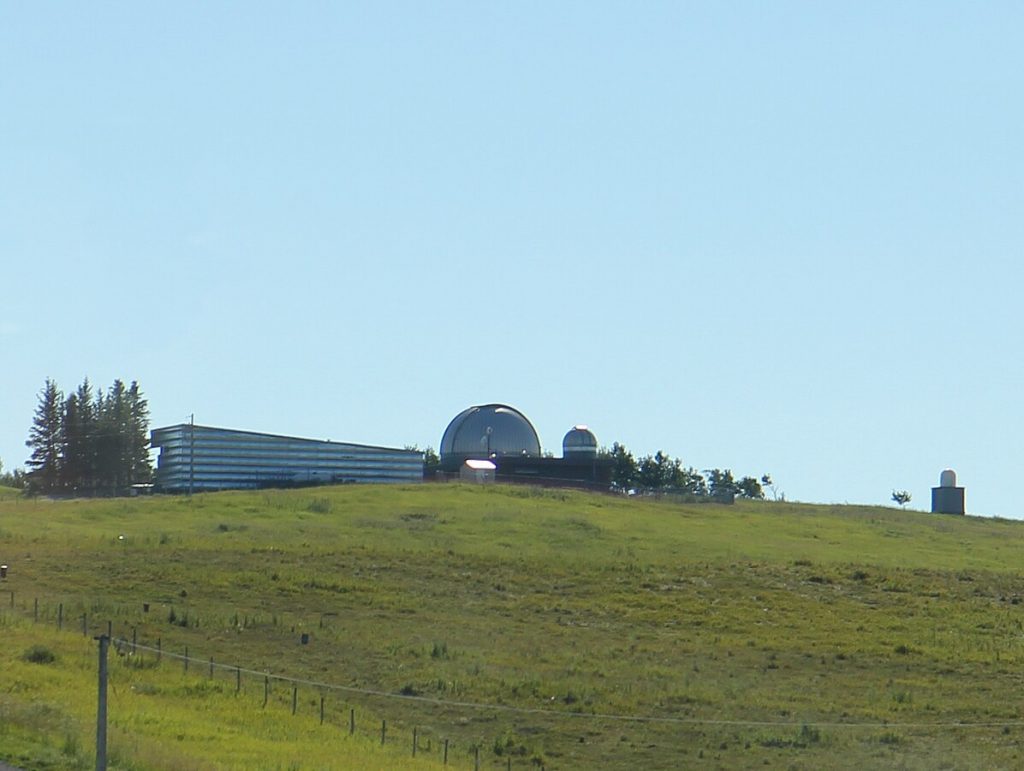
In 1979, Samuel C. Nickel donated to establish the Nickle Arts Museum. It was envisioned to contribute to education through its collection. Nickel served with the U.S. Coast Guard during WWI. Afterwards he joined his family’s shoe business in Calgary, but it was his investments in oil and gas that paid off. The museum was the first on campus to be constructed as the result of a private donation.
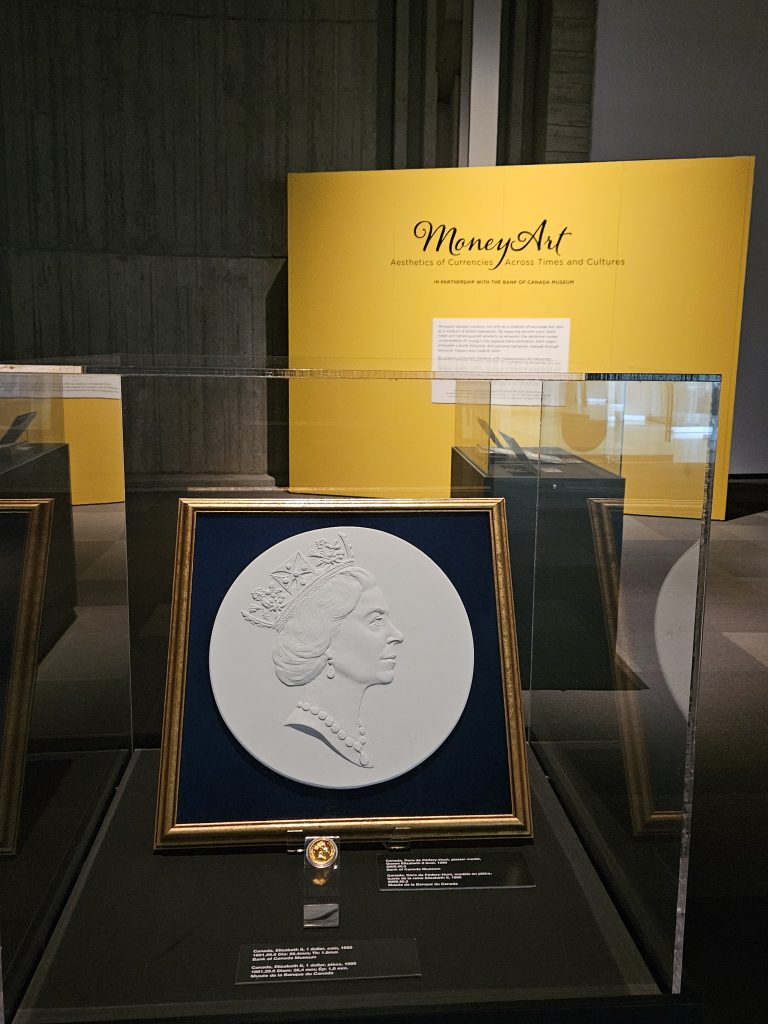
Also adding to the city’s stock of art and heritage is its purchase of the Fort Calgary site. Last we left Fort Calgary in July’s article, the original barracks had been demolished by the Grand Trunk Pacific Railway. A station was never completed on site and it was declared a National Historic Site in 1925.
In 1975, Alderman John Ayer arranged for the City of Calgary to purchase the site and restore it for the city’s 100th anniversary. He said, “if you know where you’ve been and where you are, you’ve a good chance of figuring out where you are going”.
The land was transferred and by 1978 Fort Calgary Historic Park was opened. It included a visitor centre and museum focusing on the role of the NWMP in the region. An archaeological study was also conducted, which unearthed parts of the original wooden fort and artifacts. In the 1990s, replica stables and a wagon shed were built, and a reconstruction of the barracks was added in 2000.
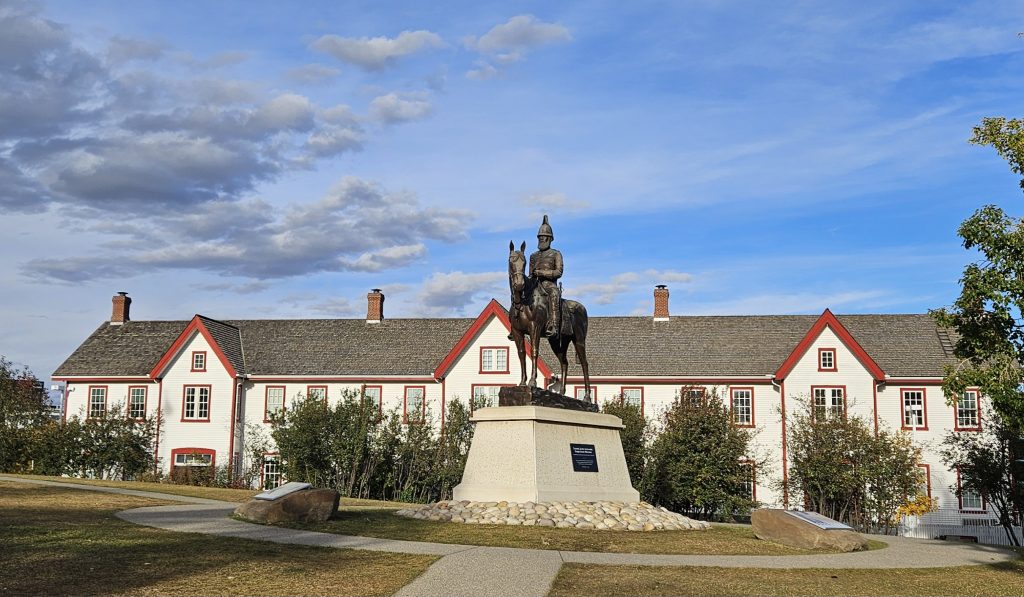
Other sports besides hockey received improved recognition around this time.
In 1973, construction began on Spruce Meadows and it hosted its first equestrian tournament in 1976. It’s an all-season facility built by the Southern family that hosts show-jumping and dressage and also hosts trade shows, including its International Christmas Market.
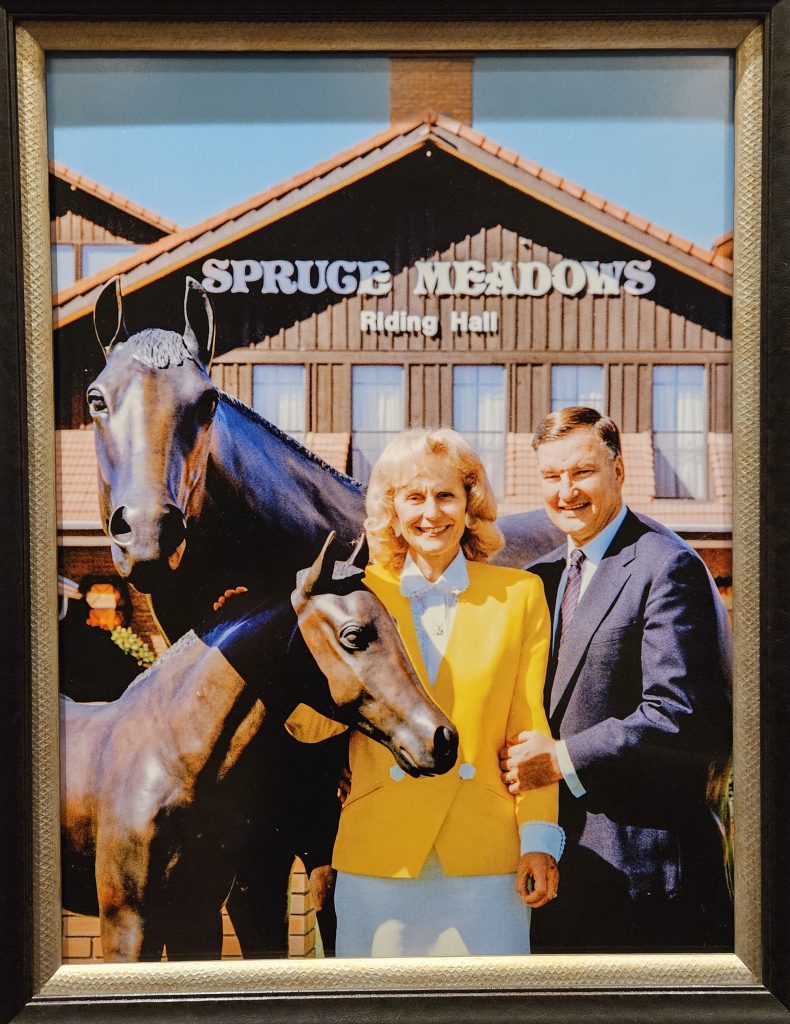
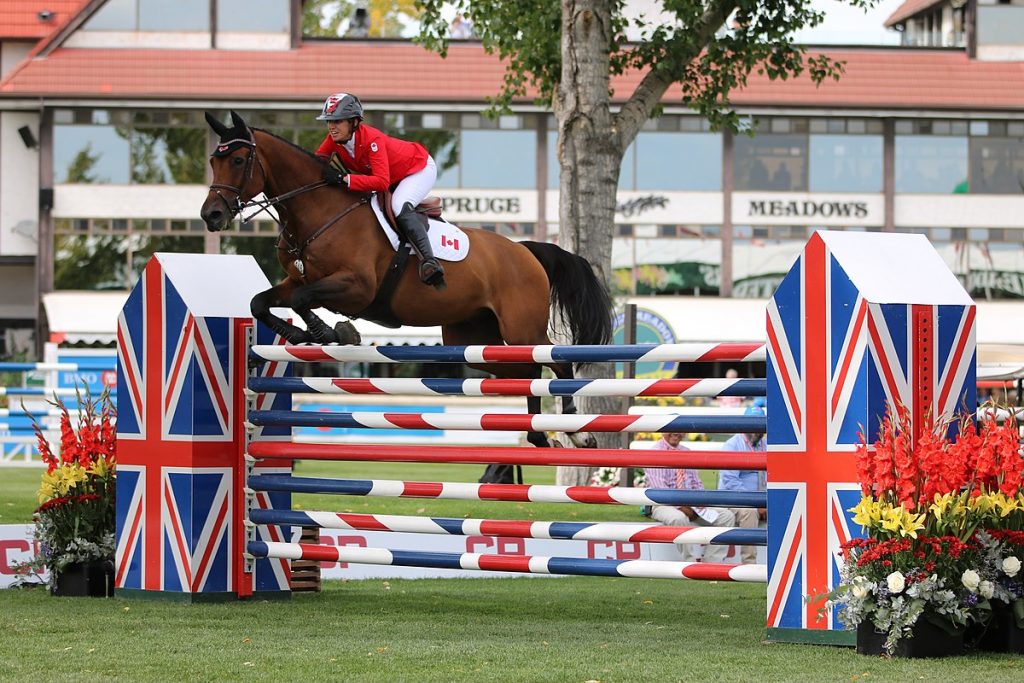
Local sports and activities flourished too, as many of Calgary’s neighbourhood sports facilities were built starting in the early 1960s. One example is the Norma Bush and Father David Bauer Arena.
Norma was a resident of Bridgeland-Riverside and nurse at the Bethany Care Centre. She volunteered in local sports by coaching baseball, for which she became one of the first women to certify as a baseball umpire. She also taught figure skating at the local outdoor rink and became the Alberta representative to the Canadian Figure Skating Association. She was an advocate for local sports amenities, and the Norma Bush Arena was named in her honour in 1974.
Fr. David Bauer was an almost-NHL player who was advised by his father to finish school first rather than join the Boston Bruins. He won the major junior league’s Memorial Cup in 1944 with a Toronto team and also ordained as a priest. He coached his former team to a Cup win in 1961.
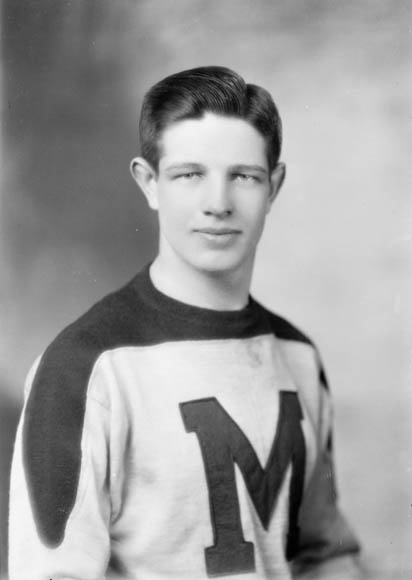
In 1963, he established the Canada men’s national ice hockey team program to prepare players for international and Olympic competitions.
Besides playing on a larger ice rink, Bauer wanted to change Canada’s reputation for playing rough, which earned the team plenty of penalties during games. He won bronze as team manager at the 1968 Winter Olympic Games. Because of his accomplishments establishing and training Canada’s national hockey team, the arena in Calgary (built in 1963) that Hockey Canada uses to train players was named in his honour in 1986.
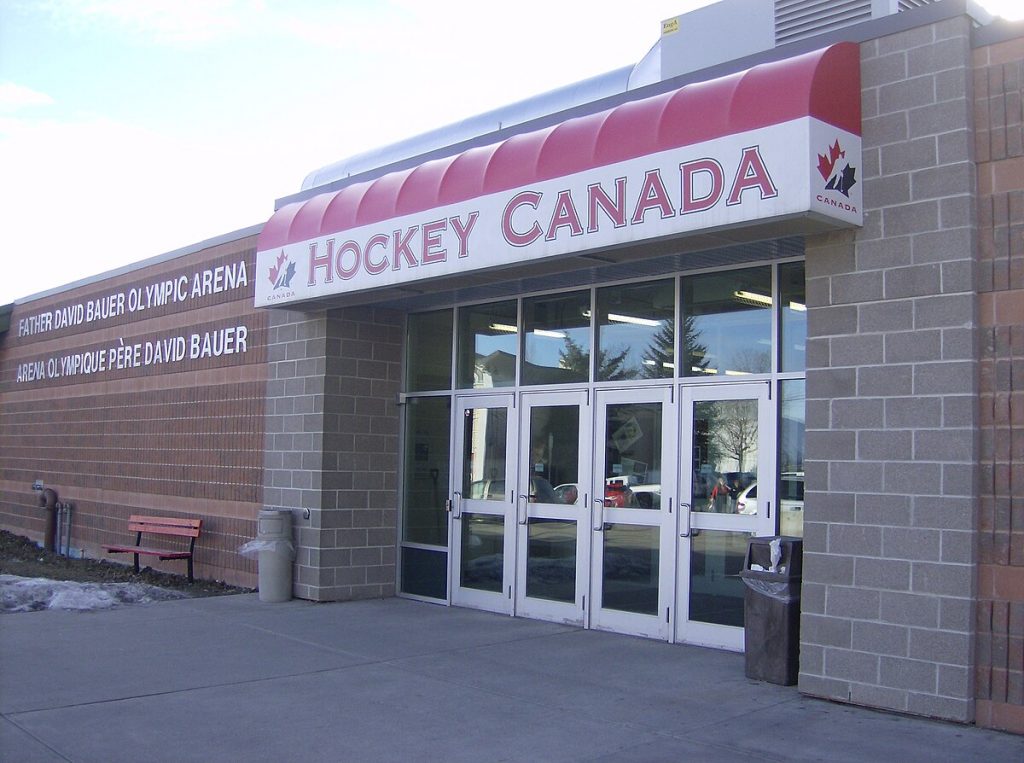
The Max Bell Centre was built in 1972.
It’s named after Max Bell, a prominent businessman, who owned energy companies and newspapers, and who established the Max Bell Foundation to give back to the public. He was the first Chairman of Hockey Canada. The Centre is a 2100 seat hockey arena, usually playing lower league teams that develop players for the NHL. It currently houses the Calgary Canucks.
For the arts fans out there, Calgary’s creative arts institutions saw major upgrades during this era.
In 1964, the Glenbow Foundation found a home for its collection in the old Calgary courthouse. This was built in 1912 in Neoclassical Revival style to house the Calgary seat of the Supreme Court of Alberta after the birth of the province. It’s one of the largest original courthouses still standing in the Canadian prairies, one of the last monumental buildings built by the province, and one of the last major buildings to use local Paskapoo sandstone.
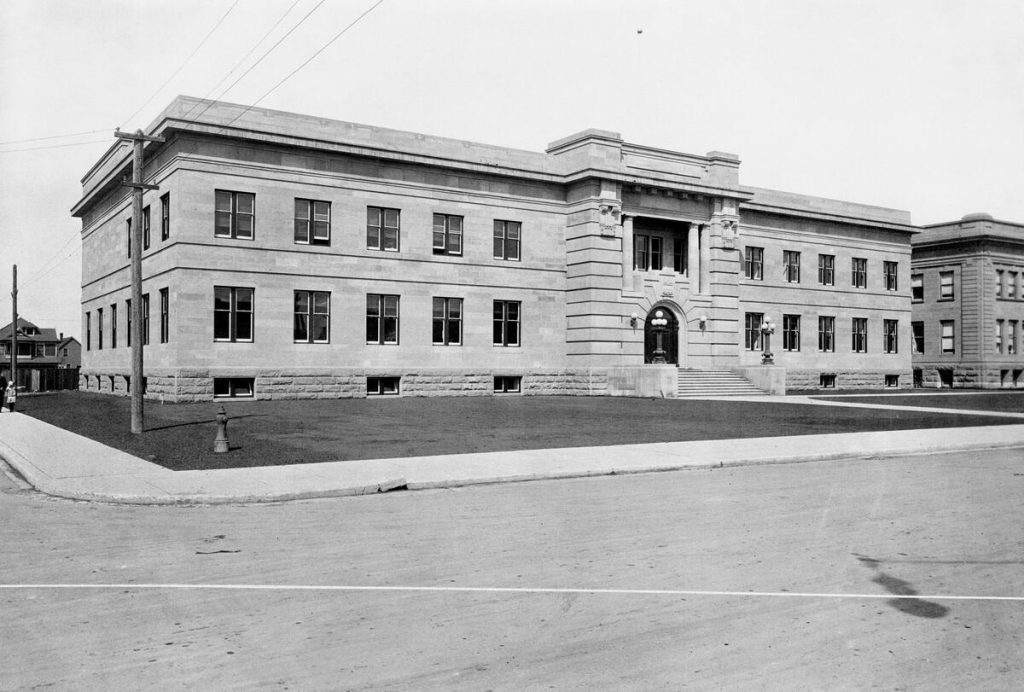
The courthouse was too small for Harvie’s vast collection and it moved in 1965 to the Calgary Public Library. By 1973, plans were finalized for a dedicated museum building. An 8-storey structure was completed in 1976 at the east end of Stephen Avenue. The 1980s’ recession impacted the museum’s ability to function, but donations from Albertans and a one-time provincial grant helped.

Today, the building is undergoing a major renovation.
It’ll reopen in 2026 with the aim of better embodying its original purpose to be an open public square for Calgarians as well as the home of the collection. A donation from the Shaw Family Foundation will see free entry to the Glenbow permanently as well as the creation of the JR Shaw Institute for Canadian Art.
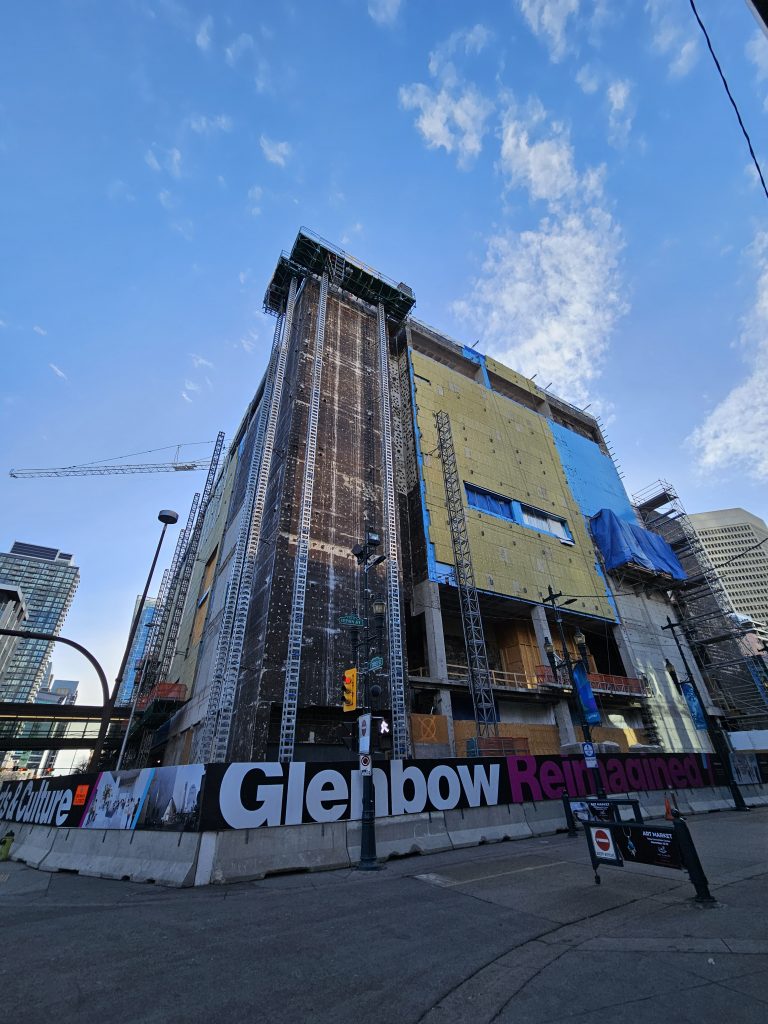
Across Stephen Avenue was built the Convention Centre in 1974. It’s the first purpose-built convention centre in Canada. It was expanded with the addition of a north wing in 2000. It has hosted many events, including political gatherings. The first time I ever saw a Prime Minister in person was when Stephen Harper was elected in 2006. He spoke to Canada from the stage here.

Continuing further east on Stephen Ave is Arts Commons.

The oldest part of the arts complex is the Burns Building from 1912. The building was slated for demolition in the late 1970s to make way for a Calgary Centre for the Performing Arts. One vote on City Council saved the building and so instead it was purchased by the city, with the upper floors used as City of Calgary offices.
The Centre was opened in 1985 by Premier Lougheed. Part of the basement remained incomplete until Engineered Air Co. donated the funds to finish the Engineered Air Theatre, complete with tin ceiling and curved staircase.
In 2001, the Centre became the EPCOR Centre after a donation from the company, and then to Arts Commons in 2014. The buildings occupy one city block and it’s one of the three largest arts centres in Canada, which hosts up to 400,000 people per year. It currently houses six arts companies, including Alberta Theatre Projects (ATP), One Yellow Rabbit, Theatre Calgary, and the Calgary Philharmonic Orchestra (CPO).
The Orchestra dates back to 1910 when it was founded by violinist A.P. Howell. In 1947, a new symphony was formed by conductor Clayton Hare that combined members of the previous Calgary Symphony with the Mount Royal Orchestra. Then in 1955, the symphony merged with the Alberta Philharmonic under the leadership of Dutch conductor Henry Plukker, becoming today’s CPO with around 120 members.
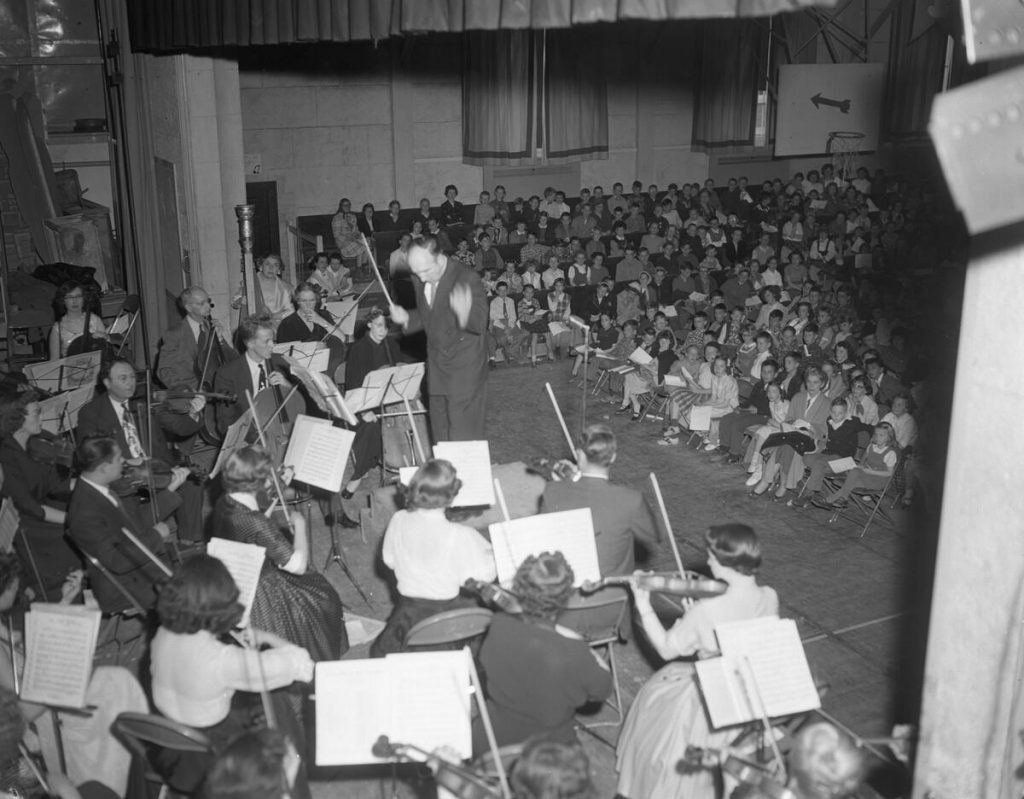
The orchestra plays in the Jack Singer Concert Hall, across the street from the Glenbow Museum. It’s described as one of the most beautiful and acoustically acclaimed venues in North America. Jack Singer was a real estate developer but was known for his interest in the arts. He was owner of Hollywood Center Studios, which is known as the home of I Love Lucy and is today called Sunset Las Palmas Studios.
ATP performs at the Georgian-style Martha Cohen Theatre. It’s designed for an intimate audience experience, reminiscent of ATP’s original home at the Canmore Opera House, now at Heritage Park. Cohen spearheaded the Performing Arts Centre’s development and was the first woman to head a higher educational institution in Alberta as chairwoman of Mount Royal College’s Board of Directors.

Theatre Calgary is housed in the Max Bell Theatre. It was founded in 1968 as Calgary’s first fully professional theatre company. It followed on from Workshop 14 founded by teacher and director Betty Mitchell. The Betty Awards established in 1998 recognize the best in Calgary theatre.
Speaking of the arts, in 1968, Calgary received a public art installation in downtown, on the grounds of the Public School Board’s headquarters.
The Education Centre building was begun in 1967 as the first purpose-built building for the Calgary Board of Education. The home of Rev. John McDougall, which doubled as the city’s registry, was demolished to make way for the Brutalist-style concrete building, part of revitalizing downtown’s eastside with public institutions. The Catholic Board also received a Brutalist-style headquarters in 1968, which is today part of Bow Valley College.
On the grounds of the Education Centre stand sculptures designed by Spaniard Mario Armengol.
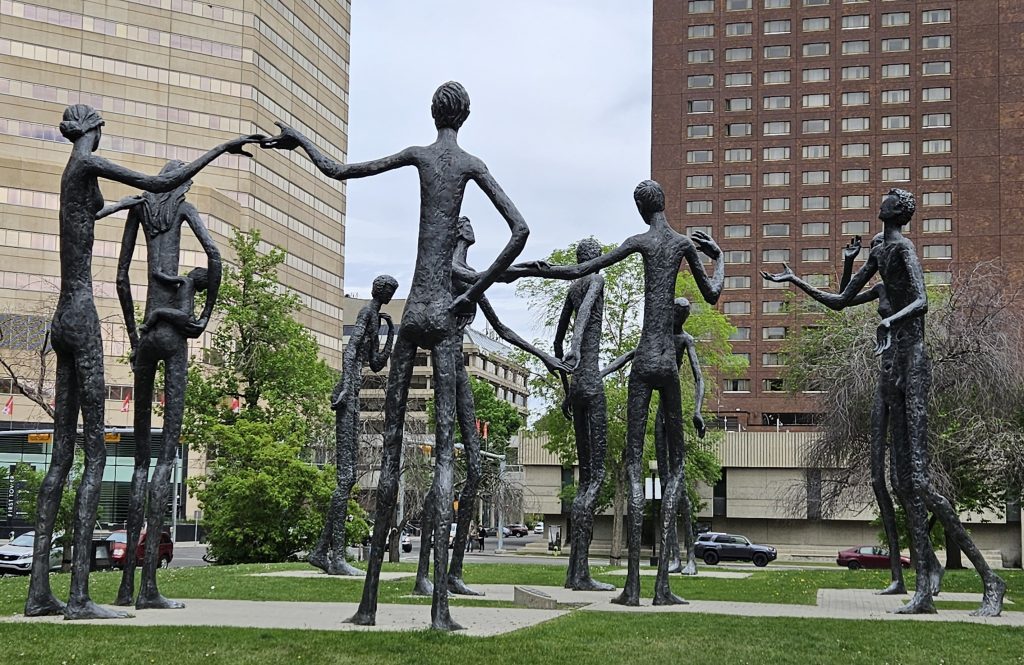
These are 10 tall, aluminum human adults and children with their arms extended, a sign of dependency and fragility and also goodwill and fellowship. Called the “Brotherhood of Mankind”, or sometimes “The Family of Man”, it was part of the British Pavilion during Expo ‘67 in Montreal, which was then donated by Robert M. Cummings to Calgarians when he decided to move to Calgary for business. With the Education Centre closed, the future home of the statues is being decided.
In 1972, Calgary Public Library’s Central Branch received a six storey addition. The addition to the northside of the library was officially opened by Canadian author W.O. Mitchell. Other libraries that opened during this era were Forest Lawn, Varsity, Macleod Library in Willow Park, Bowness, Alexander Calhoun, Village Square, Fish Creek, and Glenmore Square. Memorial Park Library was restored and reopened in 1977.
The expansion of the Central Library was part of the overall revitalization plan for the downtown’s east end, which included Arts Commons, YMCA building, the School Board’s HQ and the Convention Centre. The area was thought to comprise incompatible mixed uses of heritage homes and offices. Whether or not these Brutalist buildings captured the vision of a civic and cultural hub is perhaps up for debate. Either way, revitalization continues to this day.
All the rage in those days were urban walking districts. In 1968, Stephen Avenue became a pedestrian mall as part of the downtown revitalization project. The work proceeded over 4 years and included preserving the avenue’s historic buildings.
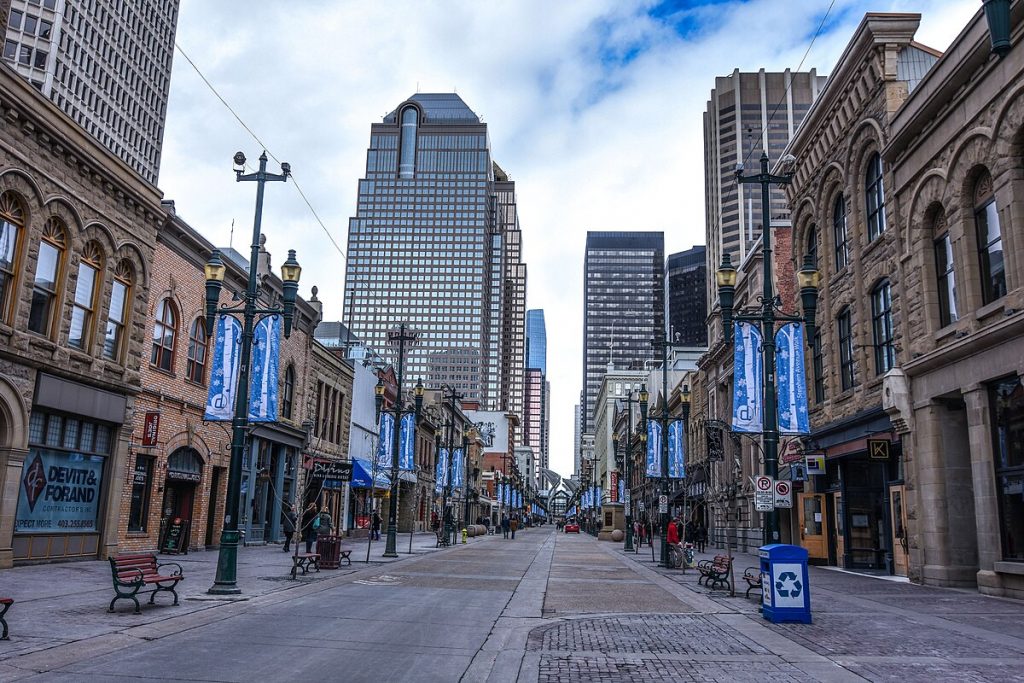
The outdoor promenade was designed as a draw for residents and visitors, particularly since many of Calgary’s new indoor malls at the time had helped cause a decline in foot traffic downtown, along with social problems and disorder. Stephen Avenue became one of the more successful examples of North American pedestrian malls, perhaps owing to the heritage that Calgarians fought to keep.
The pedestrian mall was an opportunity to install public art (the good kind!).

In 1981, the statue called Conversation was donated and installed next to the HBC Building. It was sculpted with bronze by Canadian William McElcheran and shows two businessmen from another era having what looks like an intense discussion on the streets of Calgary. Are they discussing the latest stock news, a new product at The Bay, or perhaps they’re long lost mates who were just passing by?
In 1975, downtown’s westside received Century Gardens. It was part of Calgary’s Centennial celebrations, marking 100 years since the arrival of the NWMP and construction of Fort Calgary.
The goal of the Centennial work was to establish 100 additional acres of parkland. Century Gardens was one result. It’s the outdoor cousin of Devonian Gardens and consists of Brutalist-style landscaping, with massed concrete and water features that are meant to be abstractions of nature. These features reached their end-of-life recently and the park was upgraded with a wood amphitheatre, splash pad and basketball hoops.
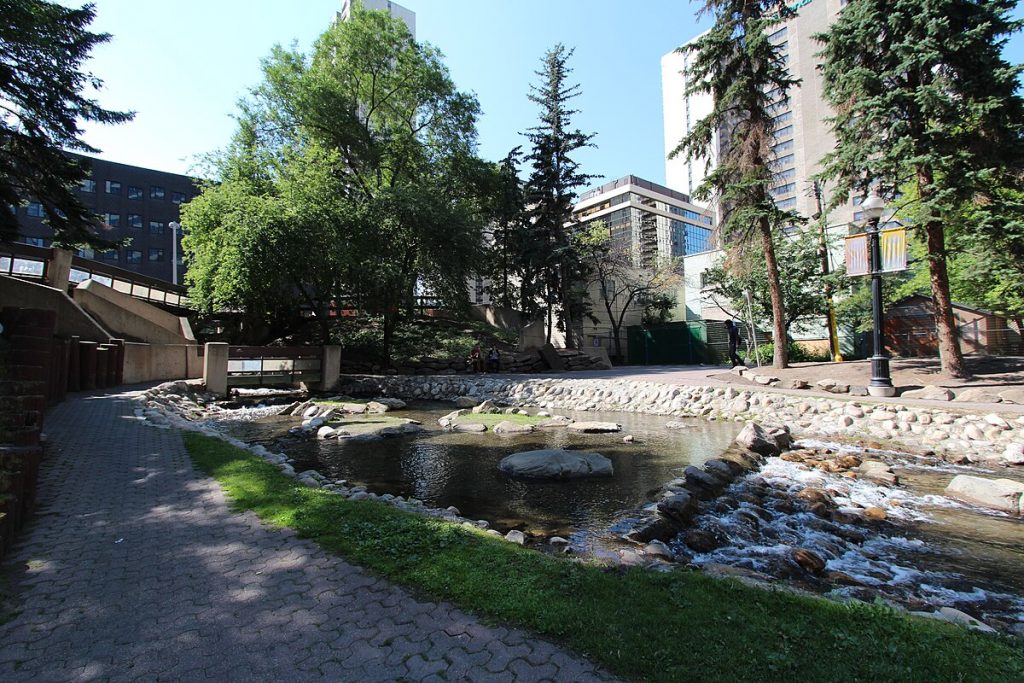
At the same time, and perhaps working in opposition to the outdoor revitalizations, the downtown’s Plus 15 system was expanded. Today it includes 16 kms of walkways and 86 bridges. The network of indoor walkways earned City planner Harold Hanen the 1970 Vincent Massey Award in Urban Planning.
The actual centennial was celebrated on August 25th. A re-enactment of the arrival of the NWMP was performed. Alderman Harry Huish led the troop of 50 riders dressed in replica uniforms. To celebrate, the city announced the site of Fort Calgary would be preserved.
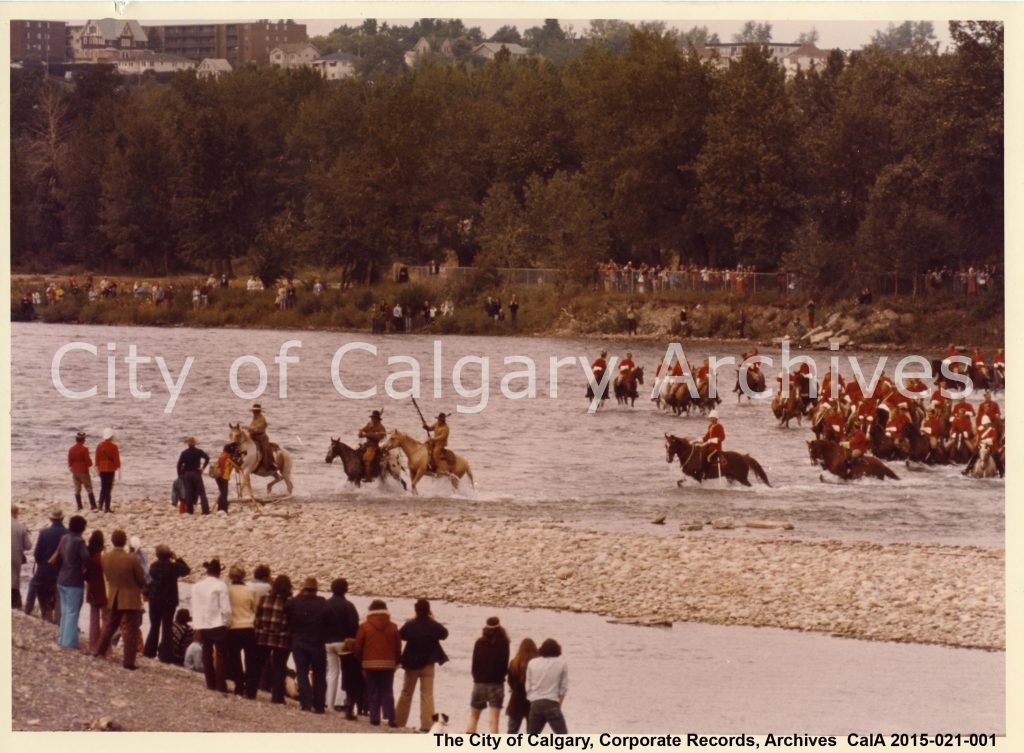

Food and Commerce
Calgary started to make a name for itself in areas other than commodities.
In 1969, a legend was born in the form of a cocktail. Italian Chef Walter Chell was working at the Calgary Inn (today’s Westin) when he was asked to create a new drink for an Italian restaurant. He was inspired by a dish called spaghetti alle vongole, which is fresh clams in tomato sauce. So he combined tomato juice, clam juice and vodka with some spices, a mix he found after three months of experimentation.
The drink became an instant hit in Calgary, especially during lunch hours. As the drink’s popularity spread across Western Canada, it helped grow the Mott’s company’s sales of Clamato. Today, an estimated 350 million Caesar’s are consumed every year in Canada (that’s about 10 per drinking-age Canadian).
What helped the new drink gain acceptance was its connection to a popular restaurant, Caesar’s Steak House. It opened in 1972 because Greek immigrant Con Giannoulis wanted to own a restaurant and the building housing it. I mean, who doesn’t want a Caesar at Caesar’s? I certainly did, and recently I finally made the trip down for my 42nd birthday to partake. Fantastico!
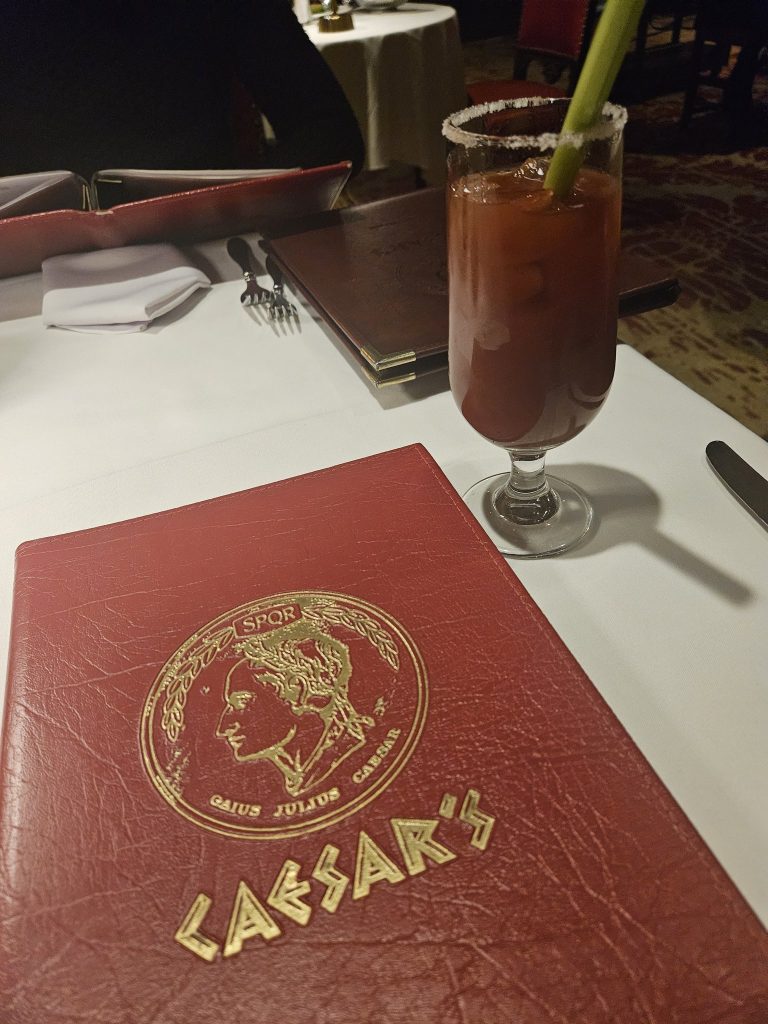
Of course, Calgary would have many notable steak houses.
Hy’s Steakhouse is Calgary’s oldest restaurant. Hy Aisenstate, the son of Russian Jewish immigrants, opened it in 1955. He had started law school at UBC but was forced into entrepreneurship due to a family crisis. The current iteration opened in 2014.

Another must mention is Nick’s. Nick Petros immigrated from Greece at 17 and ended up at Hy’s. He wanted to open his own restaurant and in 1979 Nick’s Steakhouse appeared across from McMahon Stadium.
Moving on from food, Mark Blumes was a former employee of HBC, having gone through its management training program. He started his own business in 1977 selling work boots and saw an untapped market for durable work and sporting gear. He became the founder of Mark’s Work Wearhouse, which today has 380 stores across Canada.
Another name in the sportswear industry was Forzani’s Locker Room. Tom, Joe and John were all former St. Francis Browns and Calgary Stampeders. Joe and John were part of the Grey Cup-winning team in 1971. They went on to found Forzani’s in 1974, which was the largest sporting goods retailer by 1994 (it was eventually acquired by Canadian Tire).
For the Stamps, the 1970s and 80s were a wasteland. In the 18 seasons from 1972 to 1989, the Stamps made the playoffs only 7 times, reaching the Western Final twice but losing both times to that city north of us that shall not be named. Attendance fell off and the Stampeders almost folded in 1985. However, Calgarians rallied to their team and a successful Save Our Stamps campaign resulted in good sales of season tickets.
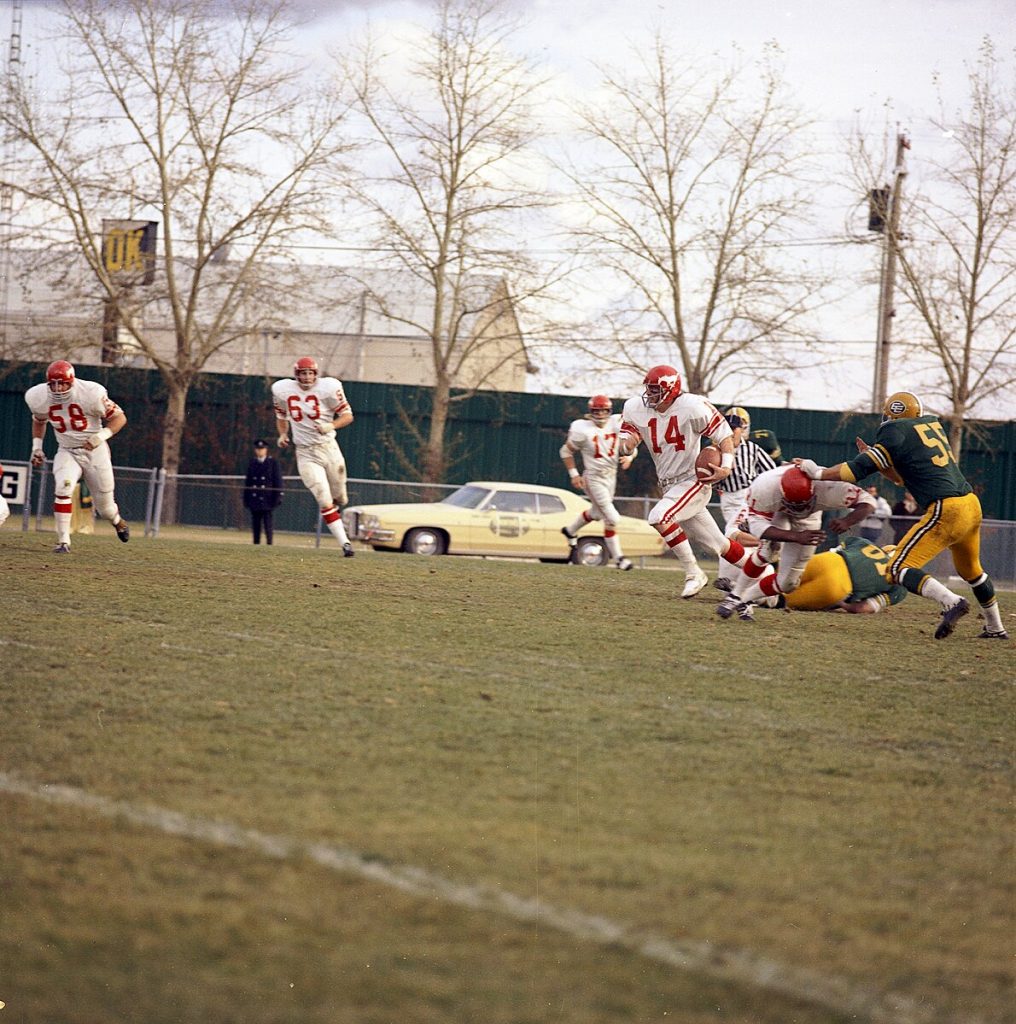

I can’t leave this section without mentioning another food product from Calgary. You know it as ginger beef.
In 1975, Louise Tang and Lily Wong of Hong Kong opened Silver Inn Restaurant on Centre Street N. They included a beef menu item among the Beijing-style Chinese dishes, which was meant to introduce the cuisine but also include a familiar item to cater to the palates of Calgarians.

Schools, Churches, Parks and Homes (aka Communities)
Let’s turn to the city’s growing communities.
In 1968, Mayland Heights Elementary School was built.
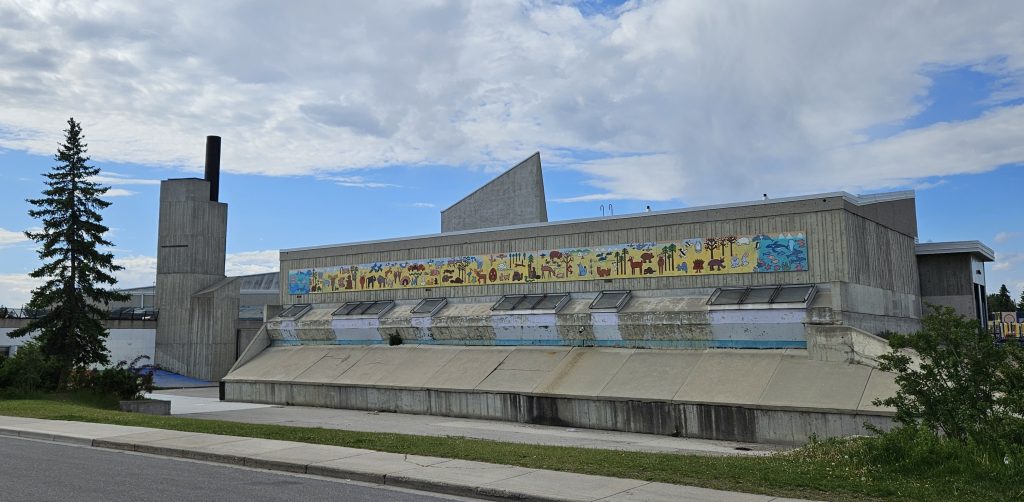
It’s a Brutalist style concrete building, which is rare for a school. To that end, its child-oriented, open-concept design elements include sloping walls to reduce massing, large graphics, bright colours, and a library with skylight.
The architect, Gordon Atkins, was the first Albertan to be awarded the Massey Medal. His other notable designs include the Stoney Tribal Administration Building in Mînî Thnî.
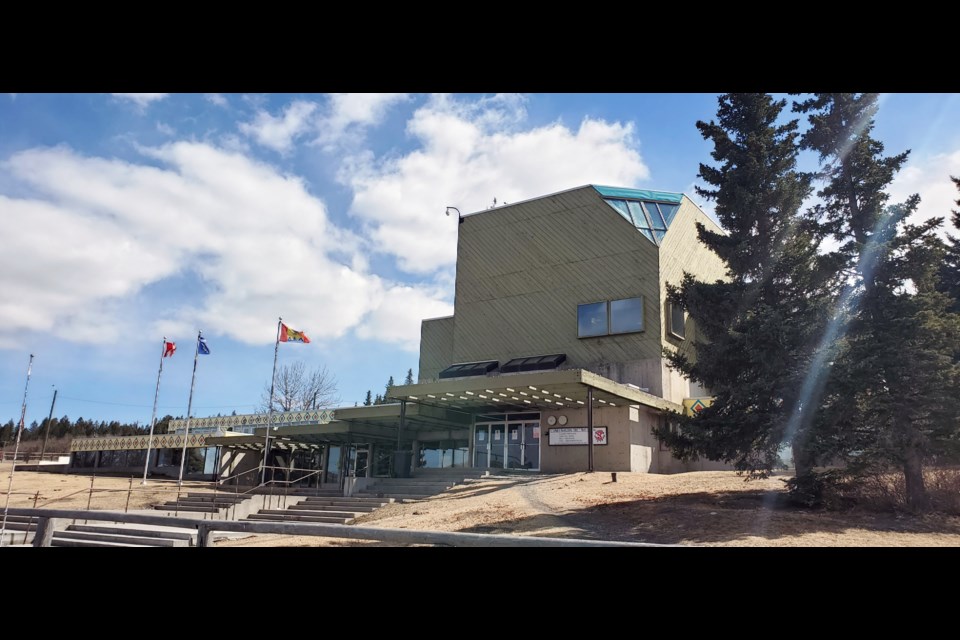
Another notable Brutalist design just to the east is Nelco Square (today called Fifth Avenue Building). It was built in 1979 and is notable for the addition of large glass windows, a lighter massing and panelling with embossed rectangular forms.
The building represents the shift outside downtown for many smaller industries and businesses profiting from the oil boom. Franklin Park Industrial Area is an example of this kind of development in the late-70s and early-80s. When the economy fell in the 1980s, Nelco Corporation went bust.
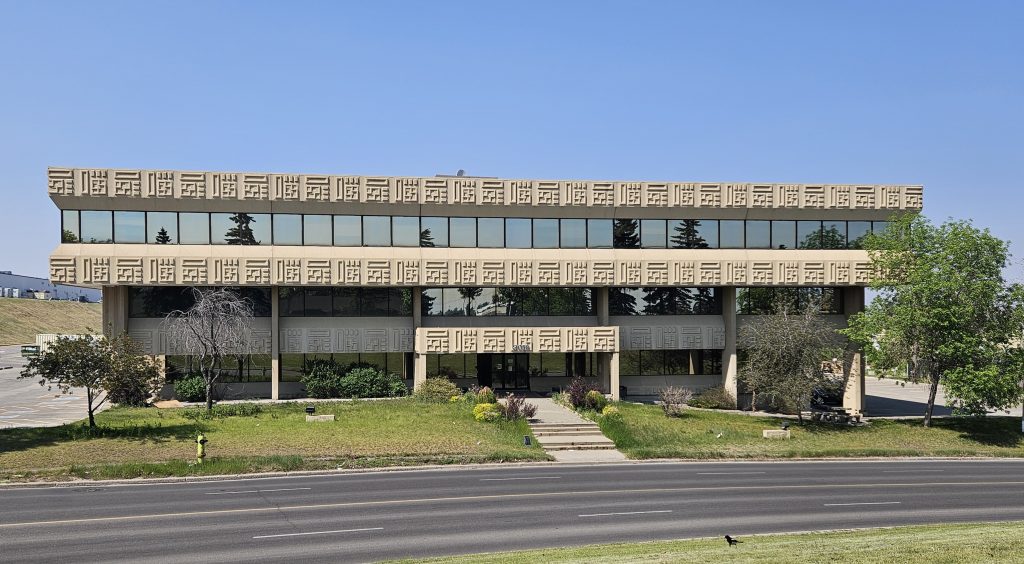
Another Brutalist design in a growing area is St. Luke’s Catholic Church in Brentwood. The neighbourhood was built up in the 1960s and is anchored on its north and south sides by shopping centres. St. Luke’s was built in 1968 entirely with concrete. Its blank box exterior is complemented by large triangular steeples that are shaped to cast light into the interior.
Before it’s demolished, I’d be remiss if I did not to mention the Condon Building in Sunalta.
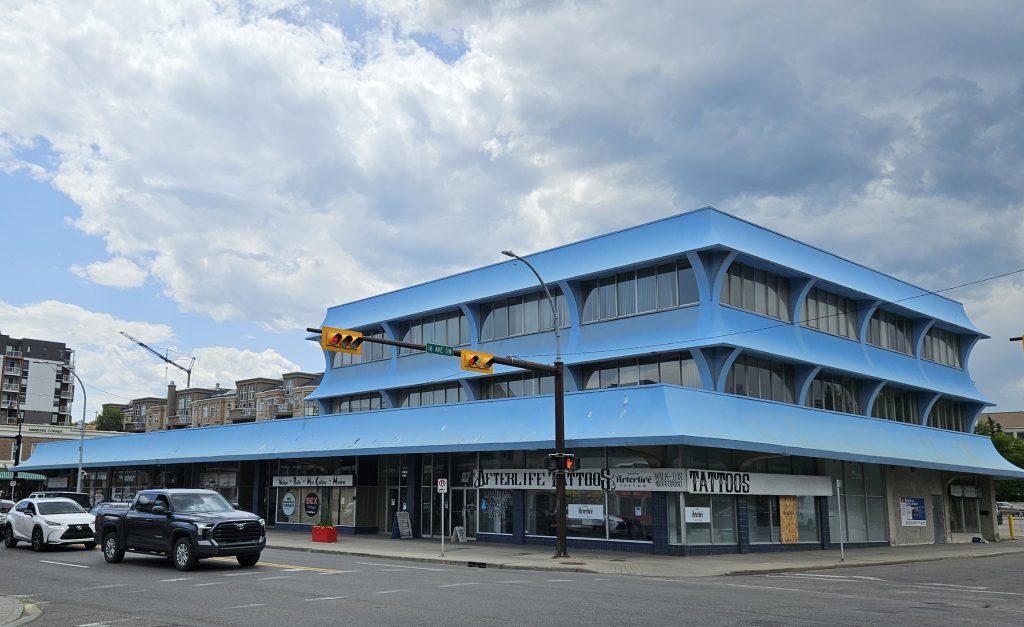
This is another version of outside-downtown office building, completed in 1966 in the Modern style with a pagoda-style roof. Jimmie Condon from Greece was a developer and businessman, owning the Mount Royal Tea Room from 1913. The wood building burnt down in 1932 and in its place was built the home of “Jimmie’s Store. This burnt down in 1964 and so the current building stands to this day, though is scheduled for demolition.
Condon donated to the University of Calgary statues of Greek philosophers, which are located in the courtyard of the Administration Building (a nice place to study by the way). He helped establish the first Greek Orthodox Church, St. Demetrios, in Spruce Cliff when it was first being developed in the 1950s. As well, his name is attached to an ice skating rink in Kingsland.
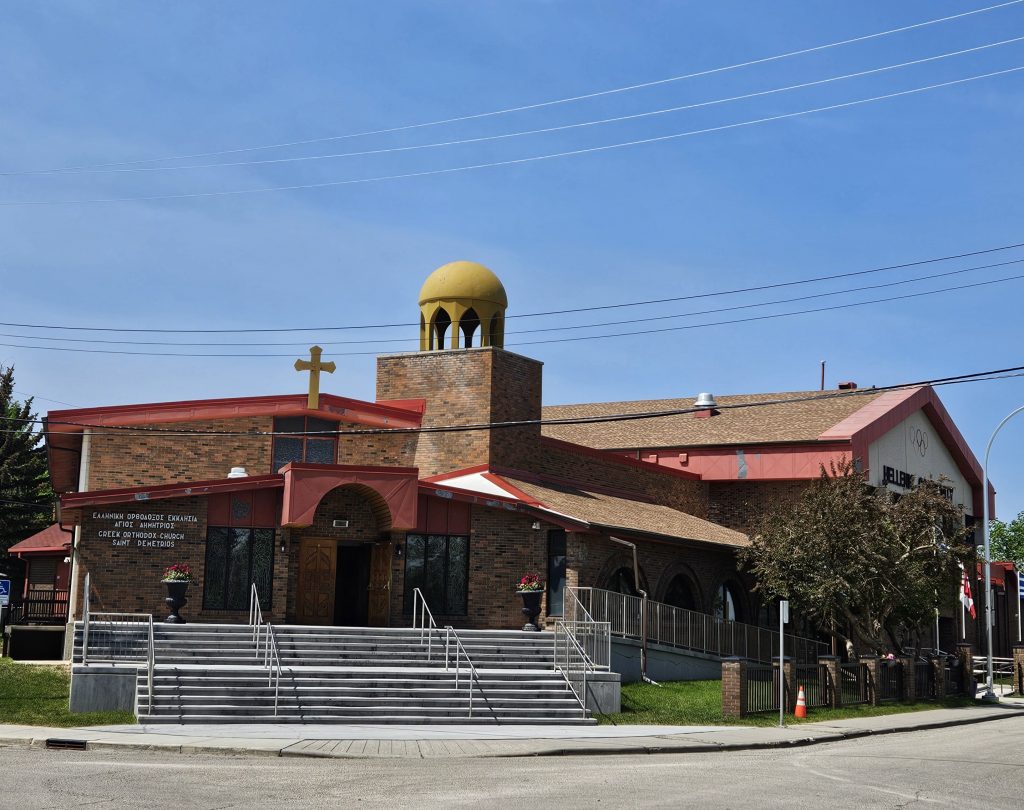
Following the rise of downtown’s skyscrapers was the rise of residential skyscrapers.
One early example from 1966 is Franklin House Apartments in the Beltline. It’s considered unique in its time for its concrete exterior in the Brutalist style, which is rare for a residential building.

A later development took place outside the core, in today’s Point McKay. This area was once part of Montgomery prior to its annexation by Calgary in 1963. Montgomery lies on the east side of the Bow River across from Bowness. It was established in 1911 and was named after Field Marshal Bernard Law Montgomery, 1st Viscount Montgomery of Alamein, a British military leader who played an important role in the world wars.
Point McKay was one of Calgary’s first attempts to build an urban village. It’s most notable for the 21-storey towers, Riverside I and II, which were completed in 1979 and 1981, respectively. The Cinema Park Drive-In Theatre was demolished to make way for the towers. While digging, two campsites were uncovered, which were found to date back between 4000 and 4600 years, along with tipi rings. A Métis encampment was also uncovered.
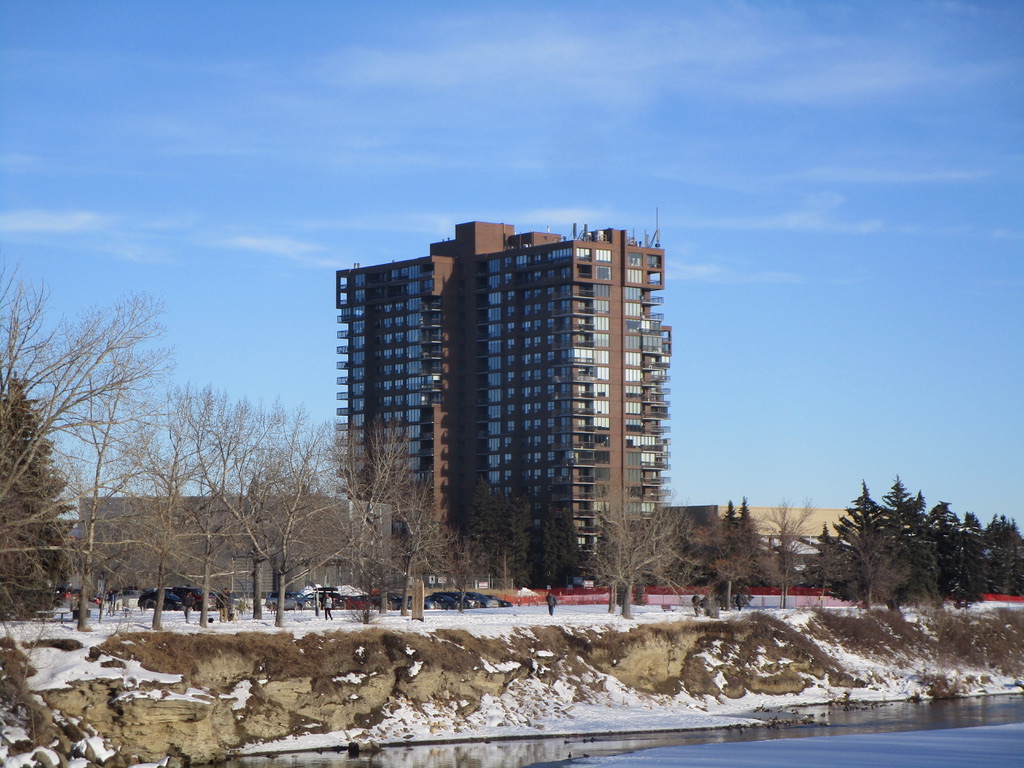
These sites were investigated thanks to the 1973 Alberta Historical Resources Act, which among other things mandates that construction sites undertake archaeological surveys before any evidence is eviscerated by bulldozers and excavators.
The area was named after homesteader Alfred Sidney McKay, who arrived in the area in 1880 from Ontario as part of a CPR survey team. He returned to Calgary in 1886 and in 1905 constructed a home in the Pioneer Vernacular style using sandstone he quarried himself from across the Bow River. Today the structure is used as part of a rec centre for the new development. Fifty acres of his land was donated to the city, today’s Shouldice Park.
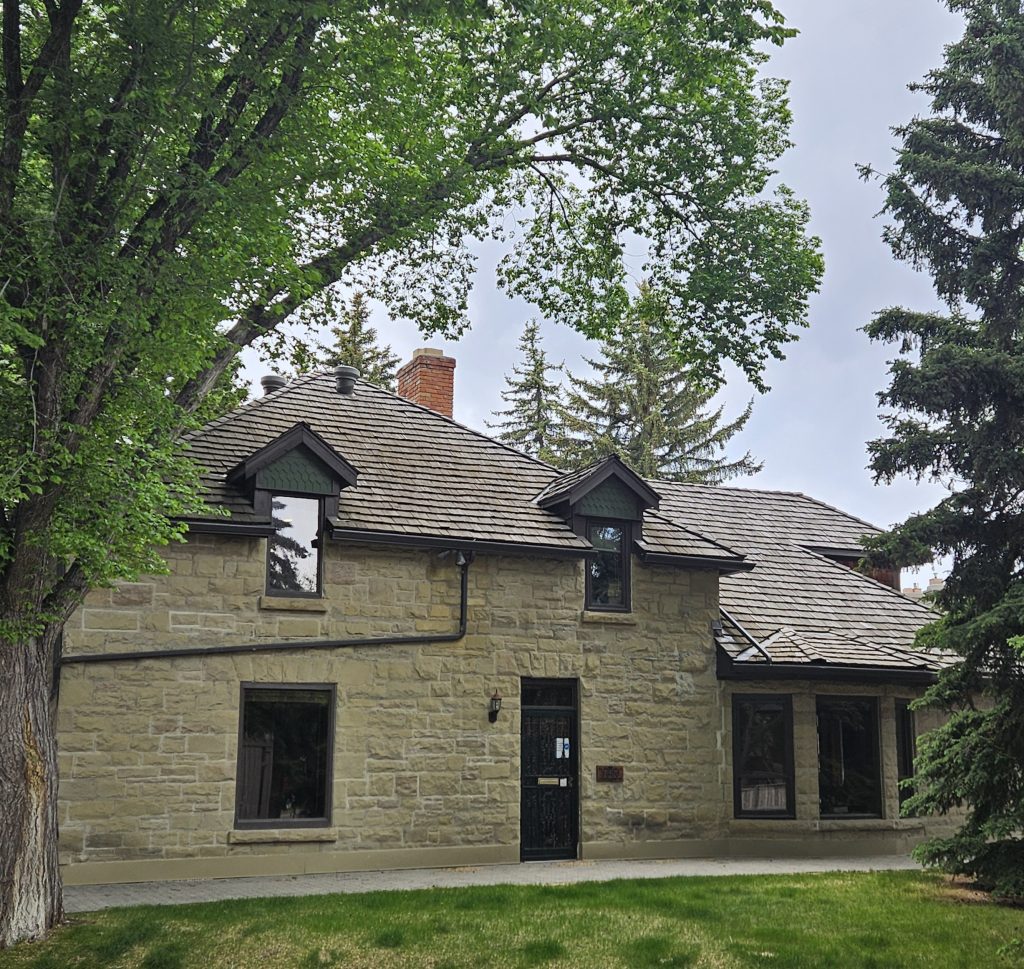
Surrounding the towers are townhomes and other high density residential and mixed-use commercial buildings. Point McKay is also notable for its garden landscaping and common areas with trees and flowers.
Parkdale lies in between the older Hillhurst area, the development at Point McKay, and the former villages of Montgomery and Bowness. Its boulevard is an extension of Memorial Drive, which turns into Bowness Road. Along 37th St NW was built its first homes, a parade of red brick buildings, when the community was newly annexed in 1910. One of these homes was the residence of George C. King, the NWMP officer who was the first of his troop to step foot on the site of Fort Calgary and who later served as mayor.
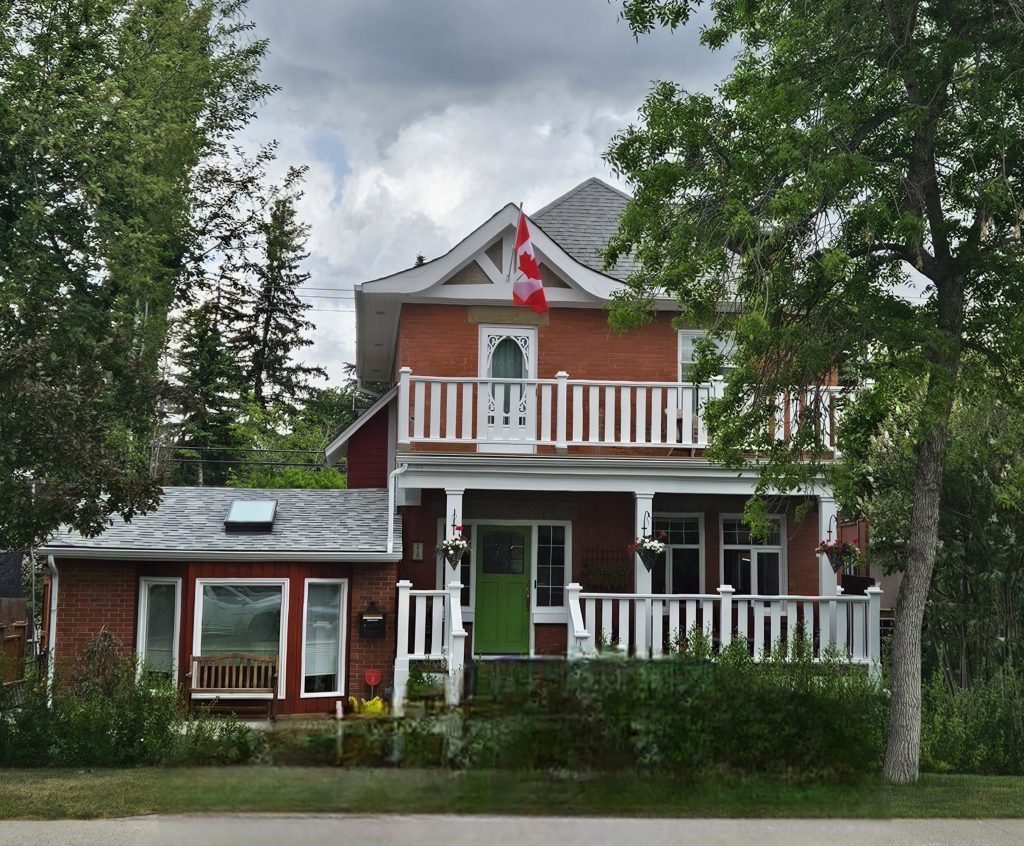
Calgary’s growth meant other communities were annexed to the city in this era. Examples include Huntington Hills and Beddington Heights. Huntington was annexed in 1961 and established in 1967. It has a well-known curling club.
Beddington was established to the north in 1979 and takes its name from the CPR station in the area, named for Beddington, Surrey, England. The community is sandwiched between Nose Creek Park and Nose Hill. Both these neighbourhoods feature single-family homes in mid-century, split-level and ranch-style bungalow designs.
The growth of communities in size and number meant some started to organize officially. The Alberta Societies Act, 1924, enabled community associations (CA) to incorporate as non-profits. Elbow Park, Mount Royal, Parkhill Stanley Park, and Scarboro were among the first to register. The process accelerated in the ‘60s and ‘70s. In 1961, the Federation of Calgary Communities was founded by 47 CAs to solve the collective action problem. They are a first step for many residents to participate in our system of democratic self-government.
Community associations in Calgary are unique and vital aspects of local government. They are volunteer-run organizations that represent community interests, improve quality of life and the urban surroundings, advocate on behalf of residents, keep local history, steward natural beauty, provide and gather information, and run social and recreational programs, with some CAs operating community halls. I’m a volunteer and you can be too!
Actually, one of the first to form was Bridgeland-Riverside Community Association, which this year is celebrating 75 years. It emerged from its prior organisation, Bridgeland-Riverside Athletics, a sporting group formed in 1908 that has brought people together ever since.
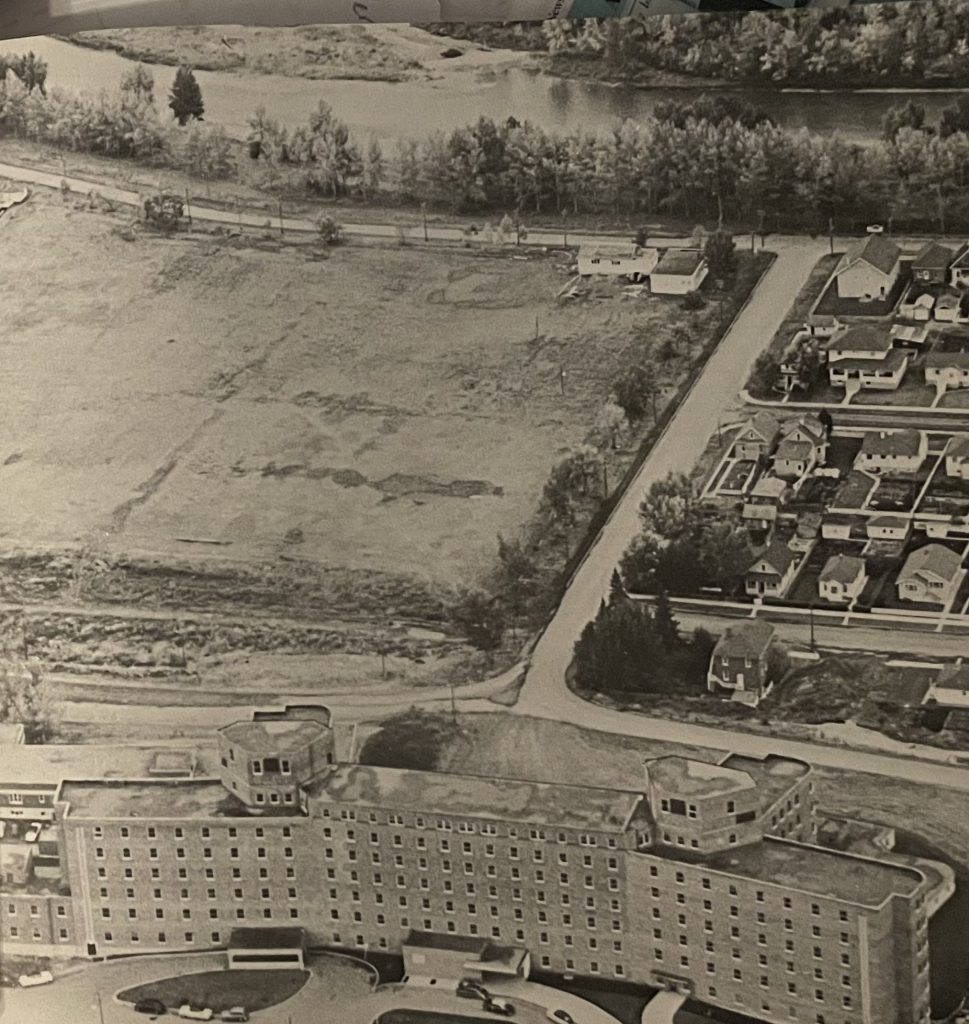
More community institutions were built in the neighbourhood in this era. St. Vladimir’s Ukrainian Orthodox Church in 1977. It’s unique for its copper-domed towers and rose window, reflecting its Byzantine Revival style.
Another of Calgary’s early communities was undergoing change at the time. The Chinatown Development Foundation was established in 1980 by George Ho Lem. It added to Chinatown by constructing Oi Kwan Place, a senior citizens’ home, as well as Bowside Manor, Five Harvest Plaza and Ng Tower Centre.
Higher density developments were controversial at the time (sounds familiar!). Some wanted the neighbourhood to remain lower density and in contrast to the tower blocks of the downtown core that were built right next door to Chinatown.
The Chinatown Area Redevelopment Plan of 1984 called for medium to high density in the core of Chinatown, with high density commercial on its perimeter. From it were constructed more senior citizens’ homes, such as Wai Kwan Manor and Wah Ying Mansion.
Chinatown Park, known as Sien Lok Park, was also created. It and the rest of Chinatown survived the plan to build a freeway through the area, thanks to the efforts of the United Calgary Chinese Association, referred to as Sien Lok (from wai sien gee lok, “to be charitable gives one the greatest happiness”).
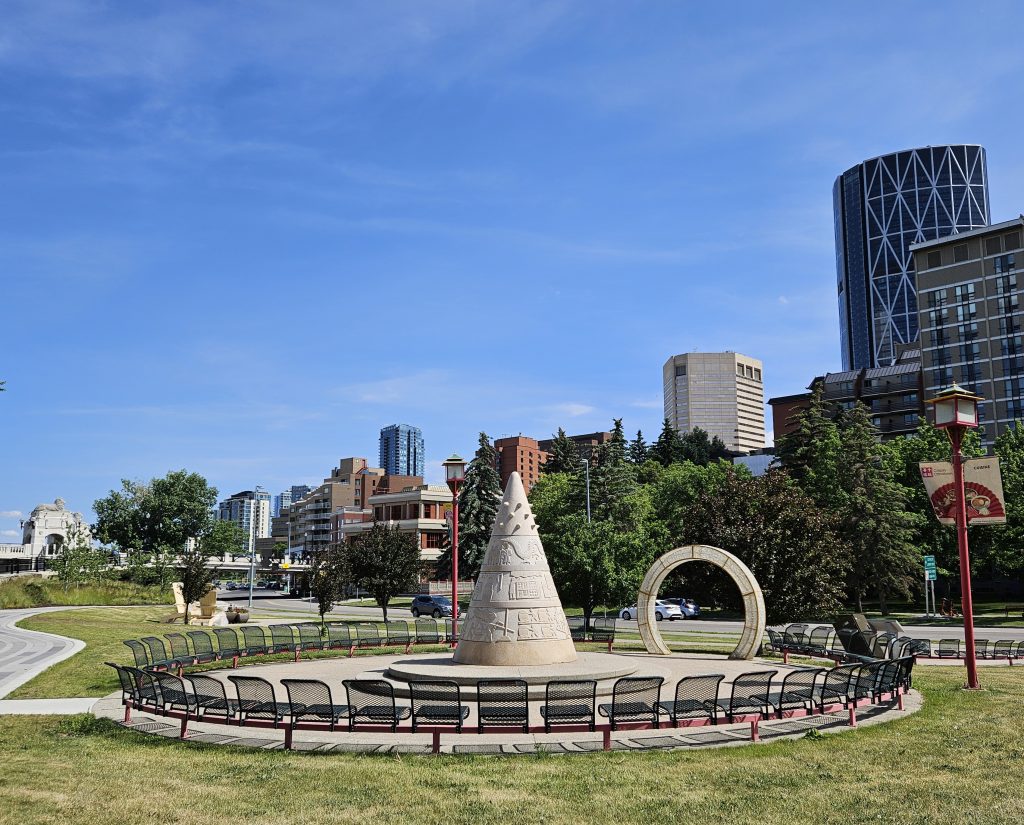
The park was part of a process of recovering the Bow River shoreline, returning it to parkland from its past as the location for light industrial activities. Work began in 1979 and funds for the pagoda and terrace were raised from 700 individual donations. The park moved north in 1993 to make way for the Chinese Cultural Centre.
Calgary’s older communities were joined by newer ones from the 1950s. For example, The federal government opened official immigration in 1953 to the Portuguese to fill labour shortages on the farms and railways. Arrivals from the Philippines began arriving in the 1960s and 1970s, with communities from every continent following over the subsequent decades.
Citizens also fought for other parks in Calgary during this era.
Nose Hill was becoming surrounded by homes into the 1970s. Edgemont started developing in the 1970s, with the neighbourhood proceeding up the western slopes of Nose Hill. It’s one of Calgary’s largest communities and was considered an “estate community” (think of a modern version of Mount Royal).
Nose Hill itself was up for development starting in 1972. Some of the land for a future park was swapped between the City and Ralph Scurfield. However, the remainder was still up for development.
A grassroots group of local residents as well as the forerunner of Nature Calgary, the Calgary Field Naturalists’ Society, formed to present an alternative plan and preserve the Hill. A proposed rezoning of the land for development was before City Council. Locals organized a petition, which garnered 5000 signatures and a march along John Laurie Blvd.
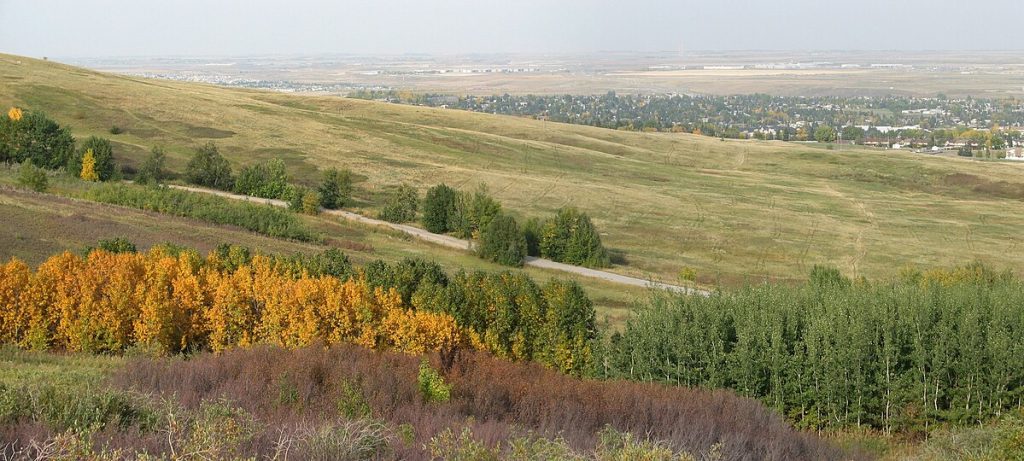
The City decided to set aside part of the area from development and began acquiring the land. A Master Plan from 1980 sought to make the almost 2800 acres of grassland one of North America’s largest municipal parks. Because the City set aside land it did not own, the issue went all the way to the Supreme Court in 1984, with the City winning the right to purchase the land at its own pace. The province and city eventually shared the cost of purchasing the remaining land.
Today it’s a beloved outdoor park and rough fescue grassland reserve that is home to deer, coyote, porcupine, and hawks. It also is home to over 40 recorded pre-contact Indigenous archaeological sites, mostly campsites with stone circles. And it’s a sacred place for Indigenous peoples. During the 15th Annual Conference of the Blackfoot Confederacy in 2015, a stone medicine wheel was placed at the site of ceremonies and vision quests.
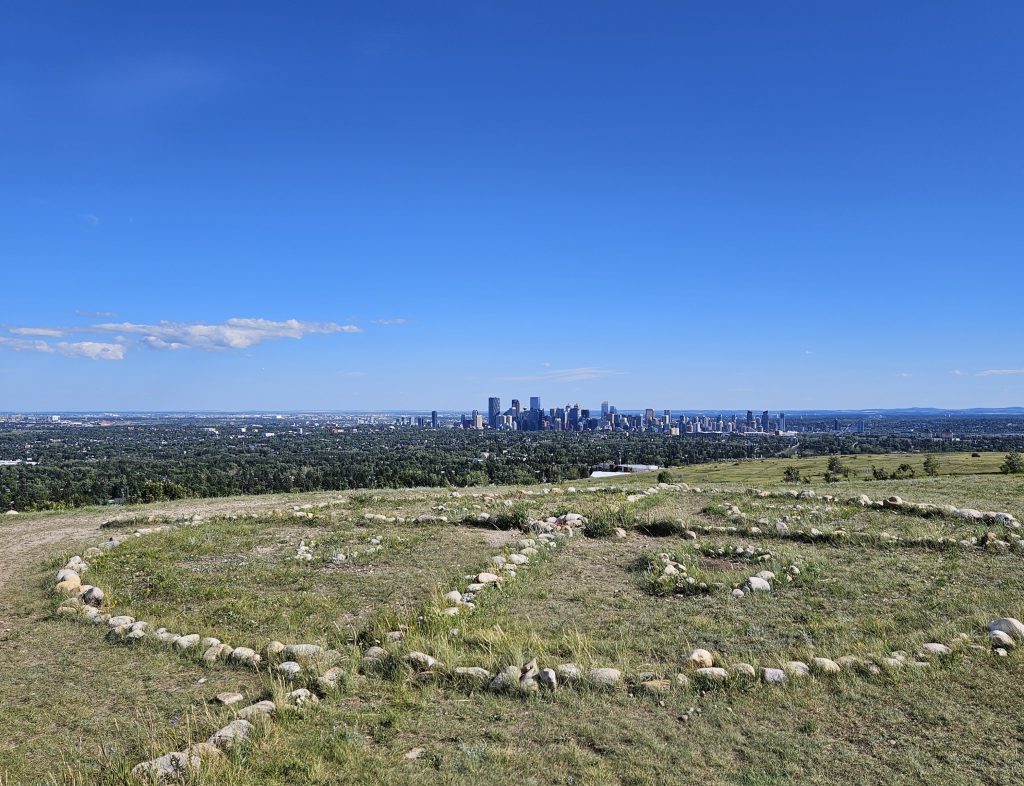
Residents also argued to protect parkland from freeway development.
Shaganappi Trail is a northwest Calgary route starting at Edworthy Park and 16th Avenue/Highway 1 and ending at Highway 772. It was slated to be part of the Downtown Penetrator route of freeways, with an interchange planned at Sarcee and Bow Trails. This route would have crossed right through Edworthy Park. Since Edworthy Park was only a “temporary” park, owing to it being the former home of the Brickburn industrial site, the plan for the route continued as late as 1995 as part of the Go Plan. But consistent public opposition and the popularity of the park and its portion of the Bow River Pathways have stopped this construction.
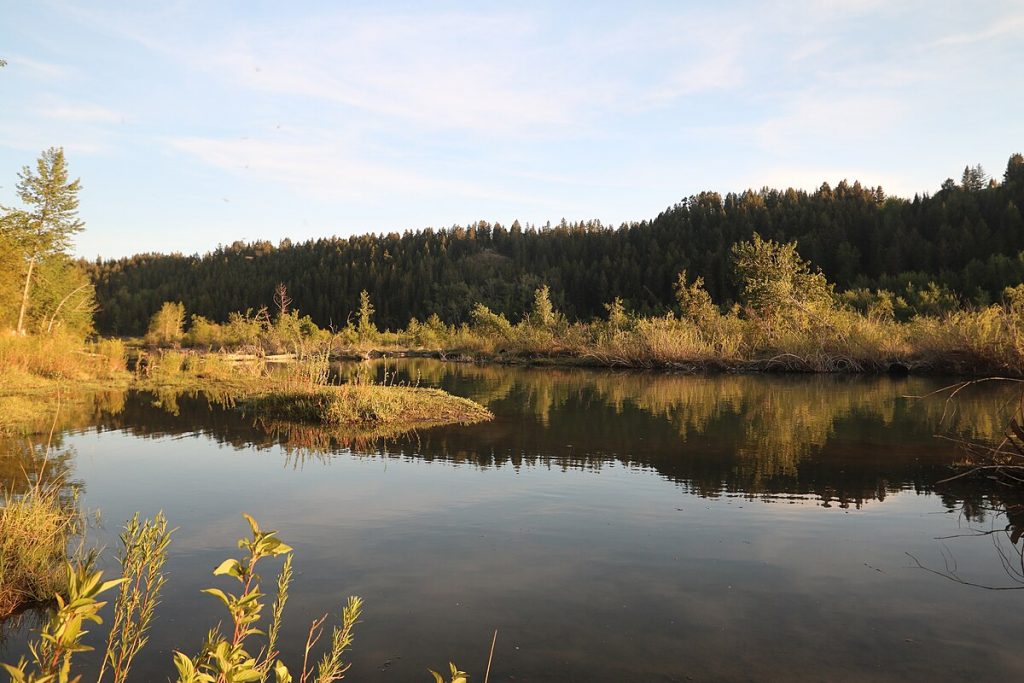
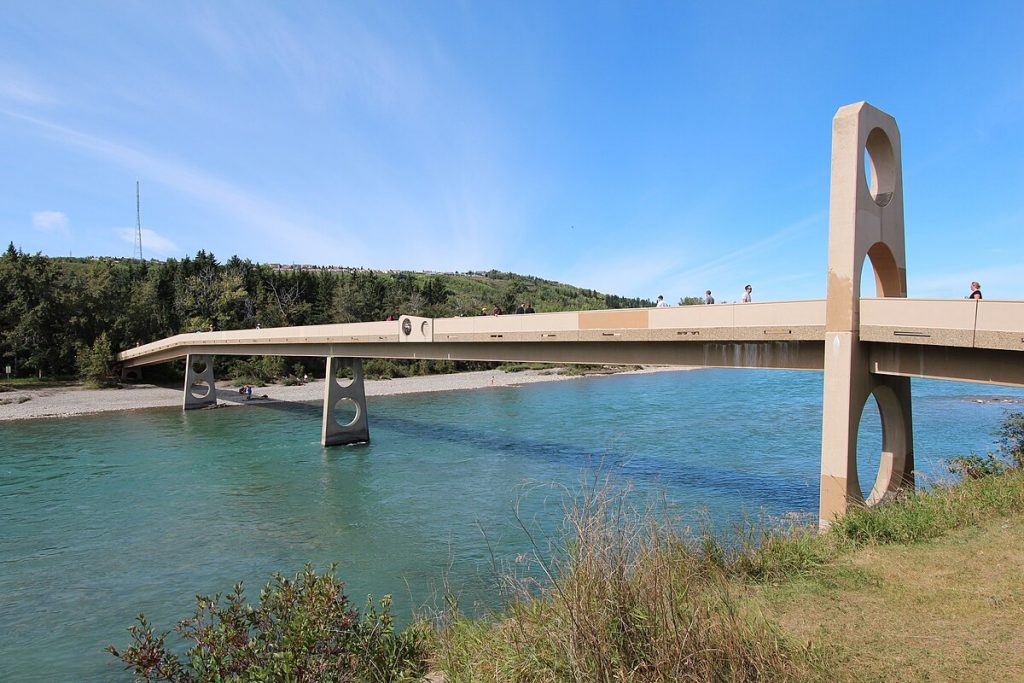
Sarcee Trail was also supposed to be connected to its northern portion through Bowmont Beach Park and Bowness community, but this too has been prevented. The park was created in the early 1980s along the escarpment of the glacial lake that once covered the area. Varsity and Silver Springs are perched overlooking the river valley.
As someone who regularly paddle boards along the Bow River between Baker Park and St. Patrick’s Island, I’m grateful the natural terrain has been retained (although when driving around town, moving along all the lights and interchanges can be a bit of a pain – see next month for more).
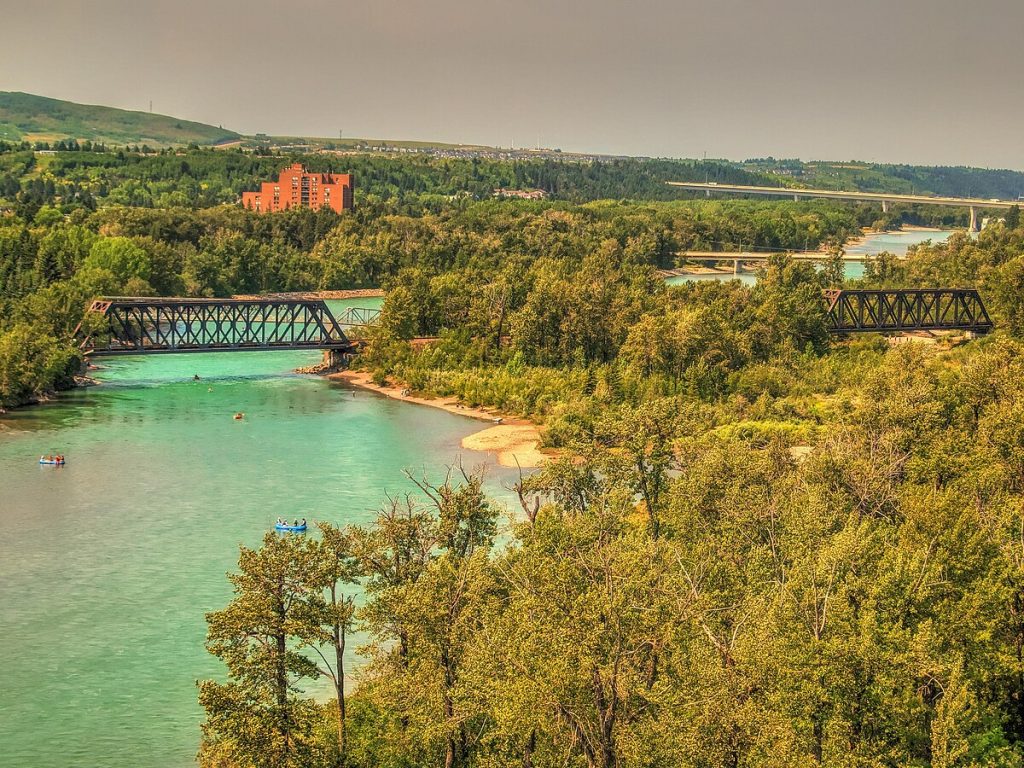
Developers too have played a role in protecting natural areas. Awareness of environmental issues grew in the 1970s, with some professionals deciding to incorporate nature directly into new suburban developments. It took some time but eventually the city was convinced to expand municipal reserve protections from only school sites and playgrounds to natural parkland.
Ranchlands Hills and Park contains high quality natural areas, which were kept as open spaces within the Ranchlands community when it developed in 1977. These areas are of a particular geological formation, known as knob and kettle glaciated terrain (see January’s article). Also present is a buffalo rubbing stone, an oddly-shaped glacial erratic left in the park by the retreating ice sheet. The native rough fescue grassland and aspen vegetation are kept in good condition and contribute to the preservation of an increasingly rare landscape. Edgemont, Hawkwood and Strathcona Park communities followed this development pattern.
Okay, let’s jump to the other side of the city.
Pat Burns had purchased the ranchlands around Fish Creek in 1902. In the 1960s, the cattle yards were unused and the area was filling with garbage. The province determined the flood risk in the valley was too high to allow home construction, and the Premier would not allow Deerfoot Trail to pass through the area. So in 1972 the province purchased the land to create Fish Creek Provincial Park.
It opened in 1975 in time for Calgary’s centennial. It’s the second largest urban park in Canada after Rouge National Urban Park on the northeastern edge of Toronto. Much of the park is forested along the creek there is an artificial lake for swimming, and there are over 100 kms of trail. Today it welcomes over 3 million people a year and is another jewel of Calgary’s outdoor amenities.
Next to Fish Creek is Woodbine, which was built out in 1979, with Woodlands to its east, which was built in 1976. The Denoon Log House is much older however. It’s a vernacular log home built by Ken Denoon, a cattle buyer, on a 40 acre site, where he would temporarily keep cattle. The home was constructed with lodgepole pine logs and local stone.
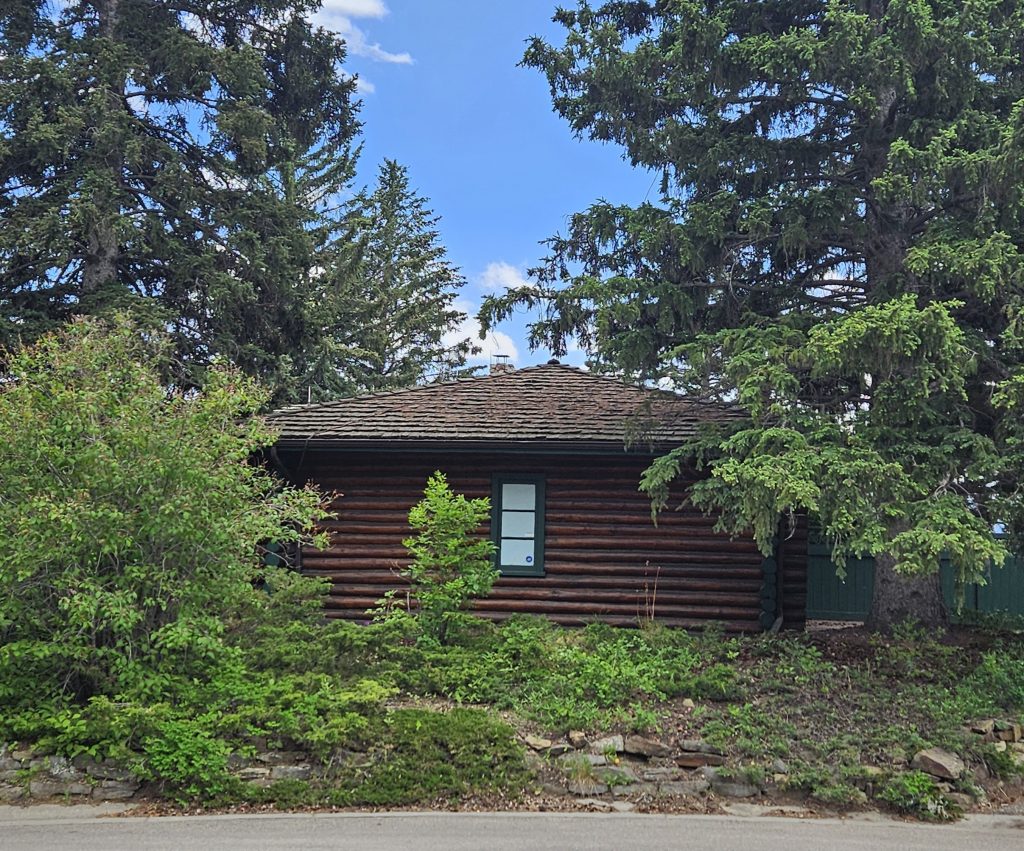
A modern log home was built in Upper Mont Royal in 1975. The Anderson Residence is a late Modern style home, west coast version, that’s meant to show the relationship between nature and building. It has a tropical atrium and makes extensive use of wood. It was designed by Bill Boucock, who also designed Earl Grey Elementary and St. Andrew’s Church. The design was at the request of Gail Anderson, who spearheaded Calgary’s public art policy.
The Wood communities have easy access to Fish Creek’s amenities and trails. Speaking of trails, Calgary’s pathways system began to take shape in the 1970s. In fact, due to protections and the development of a massive network of pathways, the Bow and Elbow Rivers’ shorelines remain natural, with no concrete retaining walls except for some areas next to bridges, flood works or canal diversion.

For Calgary’s centennial, the Bow Rivers Pathways was officially created, although parts of it have existed since 1969. Likely in opposition to the proposal for the Downtown Penetrator, the Chinook Trail Association established a dirt path on the north, which was eventually paved over.
Today, the Bow River Pathways is 48 km between Bearspaw Dam and Fish Creek. As well, pathways were added along the Elbow to Glenmore Reservoir, with extensions moving out from there, such as along Nose Creek for example.
Around Calgary
On the western edge of Fish Creek is Tsuut’ina Nation. Calgary’s growth in both size and economy began to impact the nation. A residential district was built on the western side of the reserve land in 1972, Redwood Meadows. It’s a townsite with unique arrangements, including the land being leased from Tsuu’tina Nation for 75 years (now extended until 2095). A golf course was also built. The town is named for the area’s red-hued poplar and spruce trees.
Alberta’s real wealth of course is in its oil and gas reserves. In the 1970s, the Indian Minerals unit of the federal Department for Aboriginal Affairs and Northern Development (today called Indigenous Services Canada) was split into east and west, with the western unit becoming Indian Oil and Gas Canada in 1987. The agency aids First Nations in the development of their oil and gas resources, from assessment to royalty deposits to reclamation. It’s headquartered on Tsuut’ina Nation and administers agreements on 110 reserves across the western provinces.
In 1977, the centennial of Treaty 7 was marked. The Prince of Wales, our now King Charles III, was Stampede parade marshal that year. He also attended a ceremony at Blackfoot Crossing to reenact the event. The site hosted the negotiations and signing of the treaty. Chiefs Crowfoot and Poundmaker were also buried here, though Poundmaker’s burial was moved in 1967. The site received National Historic status in 1925.
At the centennial ceremony, a historical marker was placed where the treaty was signed. The idea was raised to turn the site into a historical and tourist attraction, with fundraising commencing afterward. This facility was opened in 2007 and houses artifacts as well as operates a theatre, restaurant and event centre.
Another important site is the location of the earthlodge village archaeological site. This village is believed to have been built by peoples from the Upper Mississippi Valley in the 1740s. It’s unique for being a permanent village on the Canadian prairie prior to European arrival, the only one known in Canada. It resembles ones that are common in parts of the U.S., with a fortified village constructed in a half circle surrounded by a moat.
Other honours have also been extended. In 1987, Mount Yamnuska (Mt. John Laurie) became part of a global network of natural spiritual places, alongside Mount Fuji, Machu Picchu, and Uluru.
On a lighter note, the Calgary area became home in 1982 to Calaway Park, Western Canada’s largest amusement park.
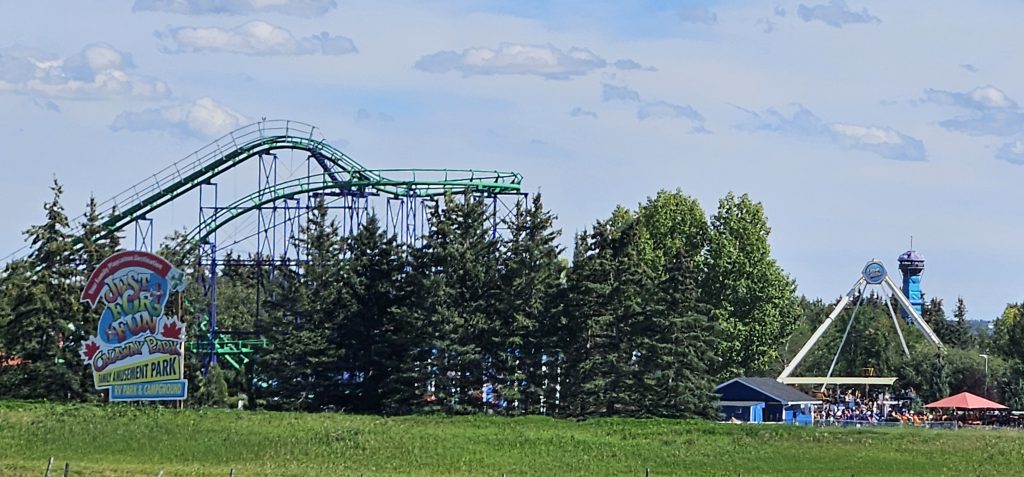
It was conceived in 1979 with the theme from the TV show The Flintstones. It was bad timing for such an investment, as the recession saw costs increase. It also encountered opposition from locals who desired to maintain a more rural way of life, one free of noise and unnatural features on the landscape. The name was changed to Calaway Park, a portmanteau of “Calgary” and “away”.
The park opened with 14 attractions, including Corkscrew roller coaster and cinema. However, continued opposition meant it quickly landed in receivership. The park lowered its fees and ditched the child-centric Flintstones theme to appeal to a wider clientele as an amusement park rather than theme park. It also added Canada’s only dry-wet ride at the time.
At Banff, the summit of Sulphur Mountain received a new summit complex in 1980. It’s the upper terminal of the Banff Gondola, built in 1959 along the eastern slope of the mountain. It was the first of its kind of gondola in North America.
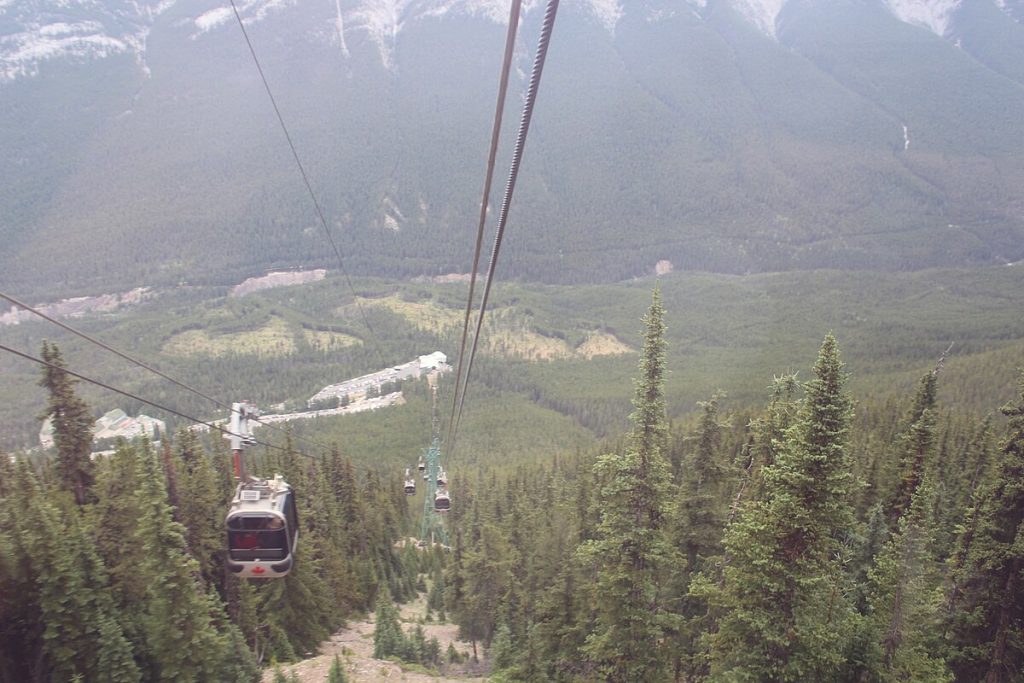
The mountain summit had previously been used for scientific purposes. In 1903, a meteorological station was built with stone on the north side of the summit ridge, called Sanson’s Peak after the station’s attendant and recorder, who trekked up to the summit over 1000 times. Then in 1957, a cosmic ray station was built by the National Research Council, the highest in a series of stations. The building has since been dismantled but the area is a National Historic Site.
Next month, we’ll take a look at the last era in Calgary’s history, its status as an Olympic City
Where to See this Era
Oil Sands Discovery Centre, 515 MacKenzie Blvd, Fort McMurray, AB T9H 4X3
Major Tom’s Restaurant, Stephen Ave Place, 700 2 St SW #4000, Calgary, AB T2P 2W2
The Core and Devonian Gardens, 324 8 Ave SW, Calgary, AB T2P 2Z2
Bow Valley College, 345 6 Ave SE, Calgary, AB T2G 4V1
Calgary Municipal Building, 800 Macleod Trail SE, Calgary, AB T2G 2M1
Harry Hays Building, 220 4 Ave SE, Calgary, AB T2G 4X3
Rundle Ruins, 631 12 Ave SE, Calgary, AB T2G 1C5
Tom Campbell’s Hill Natural Park, 25 St Georges Dr NE, Calgary, AB T2E 4S1
Bonavista Lake, 747 Lake Bonavista Dr SE, Calgary, AB T2J 2M2
Scotiabank Saddledome (to be demolished), 555 Saddledome Rise SE, Calgary, AB T2G 2W1
Nickle Galleries, 410 University Ct NW, Calgary, AB T2N 1N4
Spruce Meadows, 18011 Spruce Meadows Way SW, Calgary, AB T2X 4B7
Max Bell Centre, 1001 Barlow Trail SE, Calgary, AB T2E 6S2
Telus Convention Centre, 136 8 Ave SE, Calgary, AB T2P 0K6
Arts Commons, 205 8 Ave SE, Calgary, AB T2G 0K9
Century Gardens, 826 8 St SW, Calgary, AB T2P 1A2
Sien Lok Park, Riverfront Avenue & 1 Street Southwest, Calgary, AB T2P 0B3
Nose Hill Park, 6465 14 St NW, Calgary, AB T3K 2P6
Edworthy Park, 5050 Spruce Dr SW, Calgary, AB T3C 3B2
Bowmont Park, 85 St NW, Calgary, AB T3B 3P5
Ranchlands Parks, 519 Ranch Estates Pl NW, Calgary, AB T3G 1M1
Fish Creek Provincial Park, 15979 Bow Bottom Trail SE, Calgary, AB T2J 5E8
Banff Gondola, 100 Mountain Ave, Banff, AB T1L 1B2
Video
Blackfoot Crossing | Northwest Profiles (2011) | KSPS PBS
Further Reading
Oil Sands – An Overview, Alberta Government
Energy Crises, Political Debates and Environmental Concerns: 1970s-1980s, Alberta Culture and Tourism
The Parks that Made Calgary, Heritage Calgary
How the legend of Deerfoot rallied Calgary — and ruined the man, CBC Calgary
How the Harry Hays building got its name, Calgary Herald
The rise and long, depressing fall of Calgary’s Eau Claire Market, CBC Calgary
Calgary’s McKenzies Communities, CERB
Changing face of campus, University of Calgary
Stephen Avenue, Calgary’s National Historic District, Heritage Calgary
Concrete Masterpieces – The Brutal Blog, Heritage Calgary
The Story of How Mark’s Work Wearhouse Became Mark’s, Avenue Calgary
Point Mckay: A Garden Paradise, Every Day Tourist
Public archaeology in Nose Hill Park, RETROactive
The history of Fish Creek Provincial Park, CERB
Work of Art: Conversation by William Hodd McElcheran, Avenue Calgary
Rothney Astrophysical Observatory: 50 Years of Discovery, University of Calgary
Calgary’s Calaway Park still thrills, 35 years later, Real Estate News Exchange
The Sulphur Summit, Calgary Guardian

